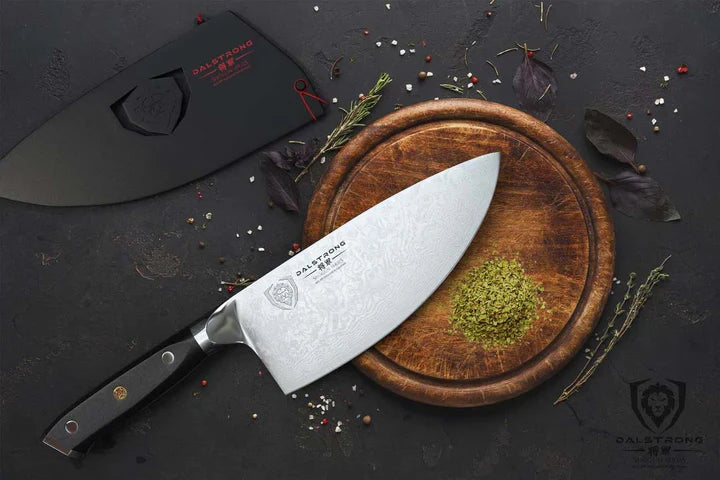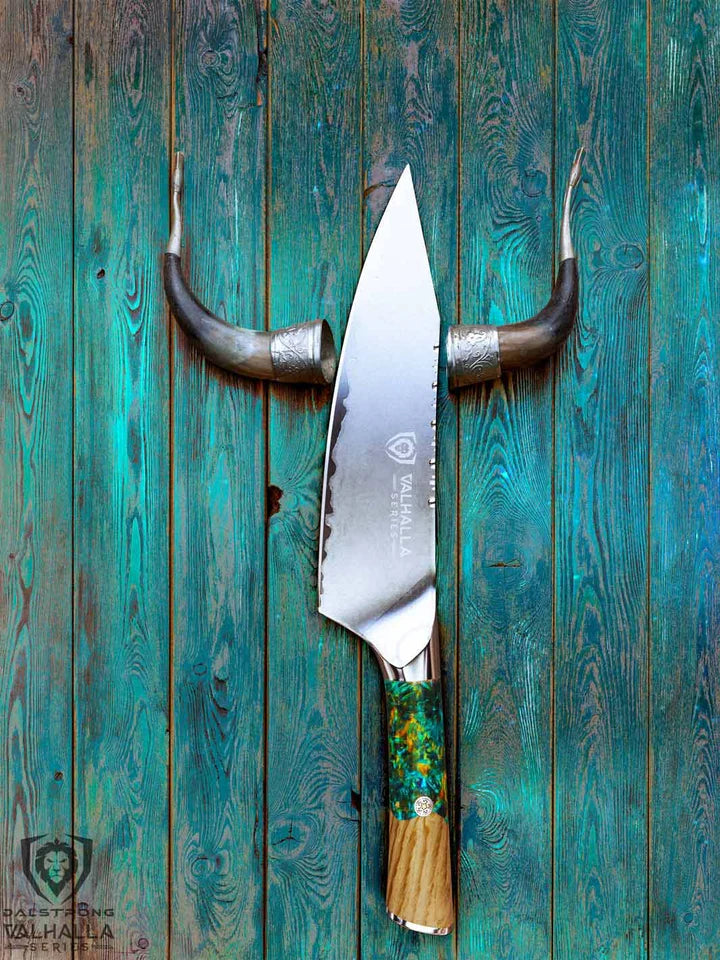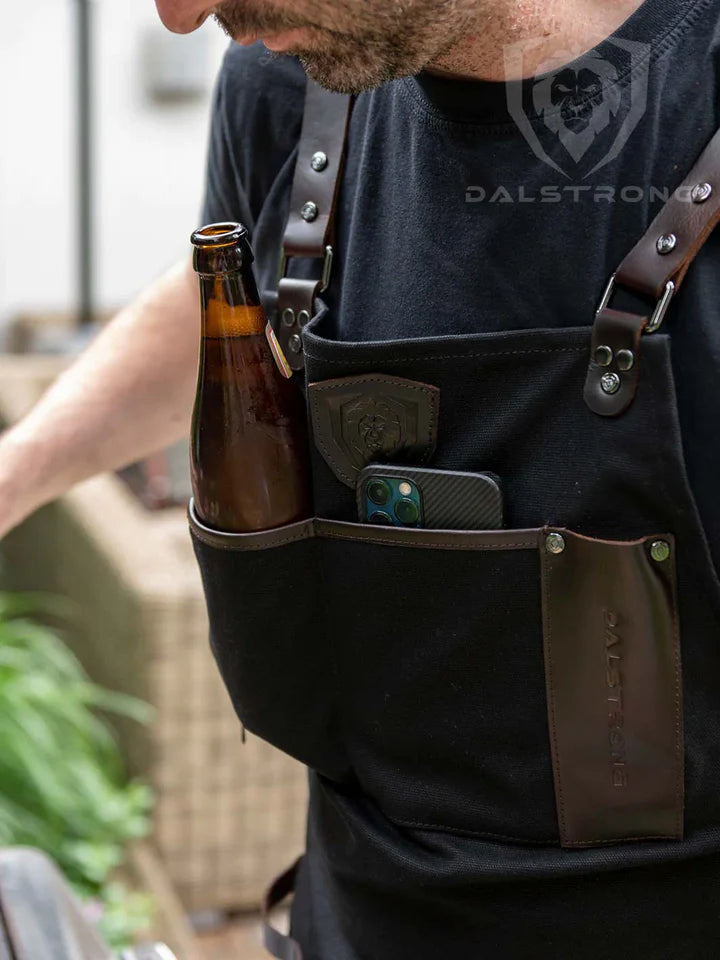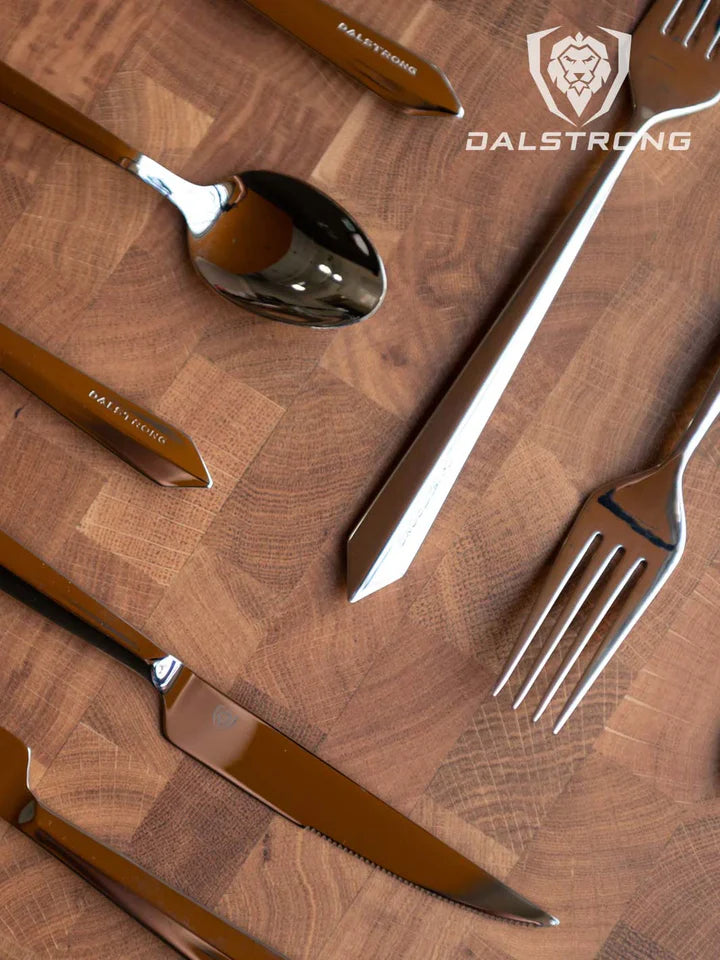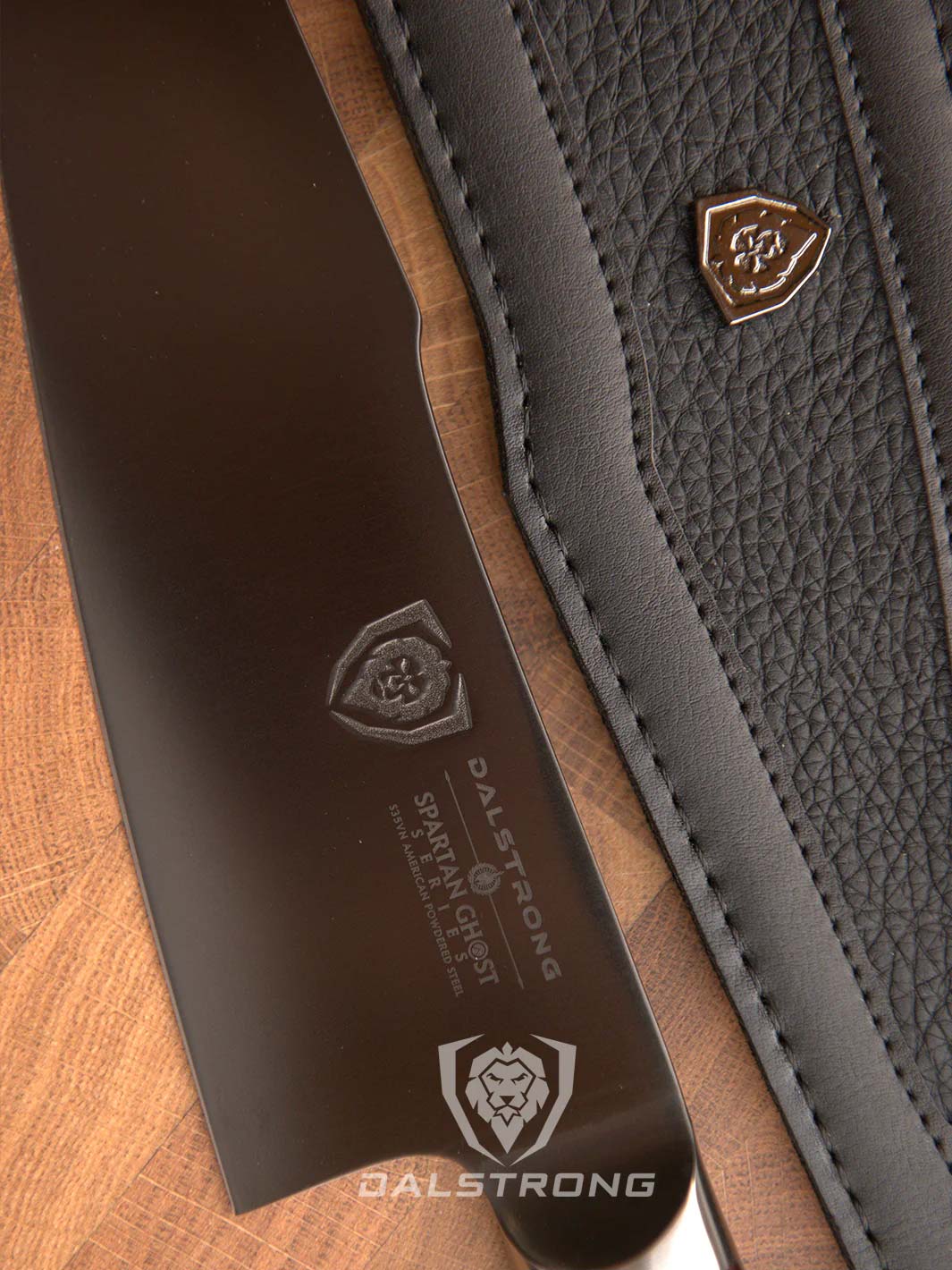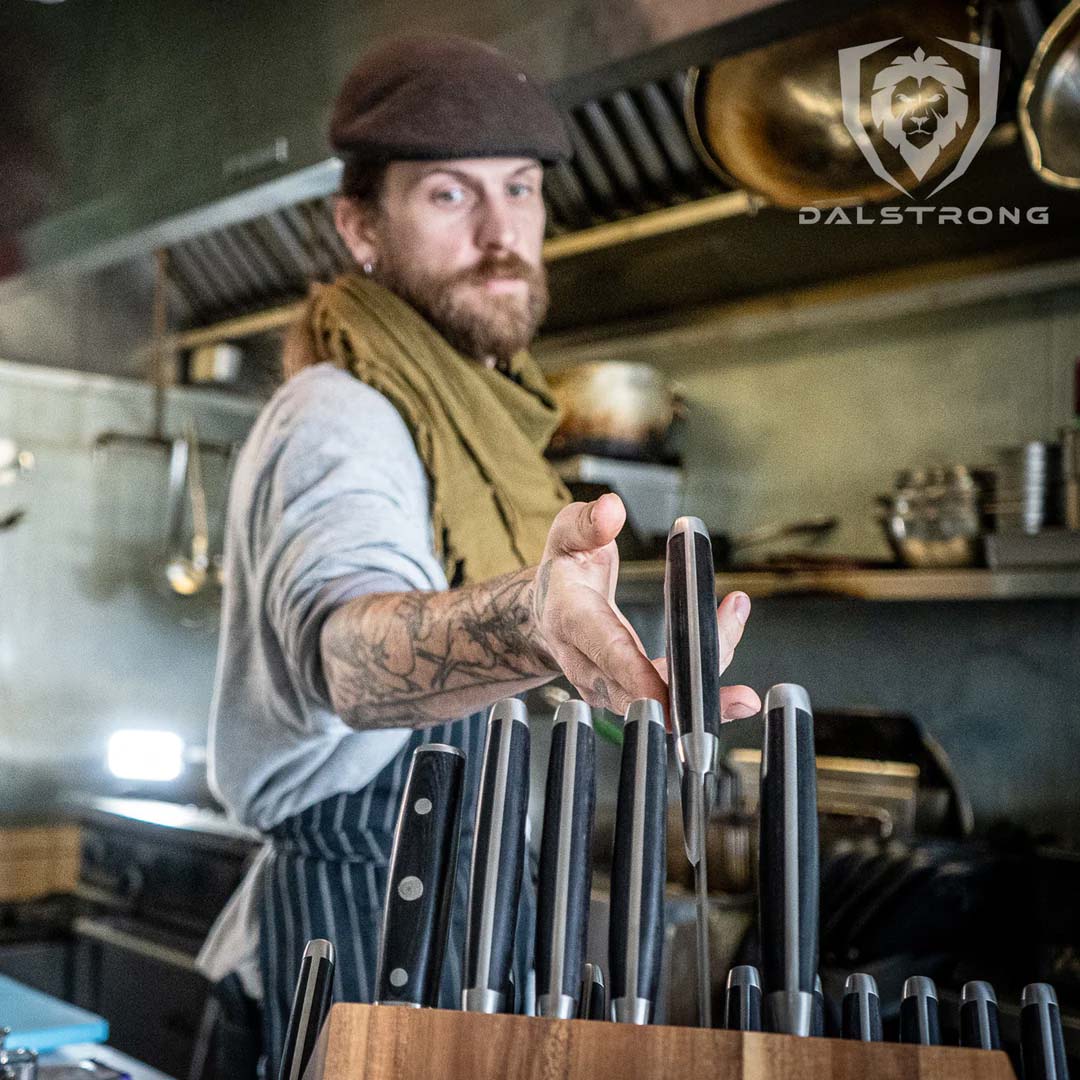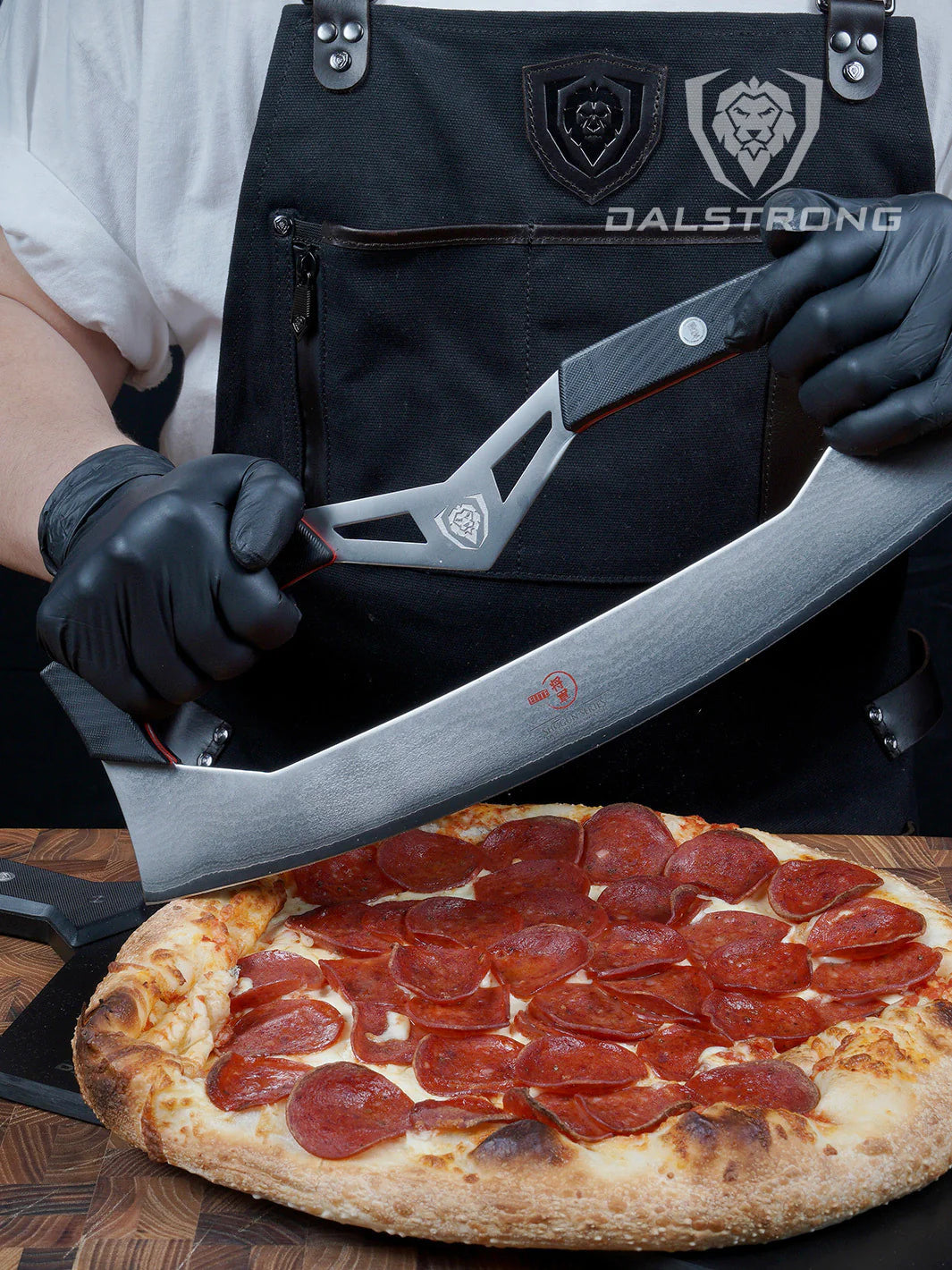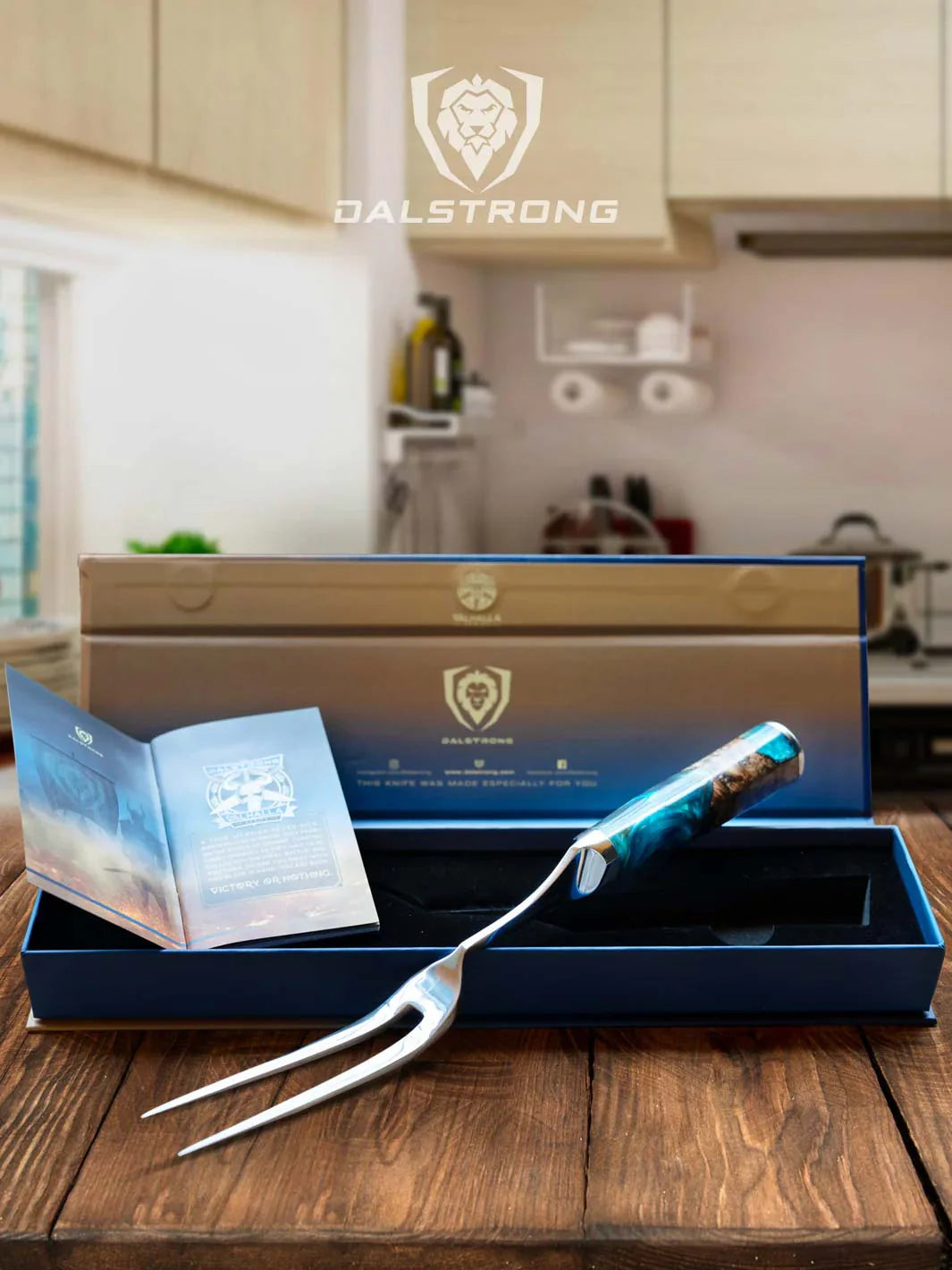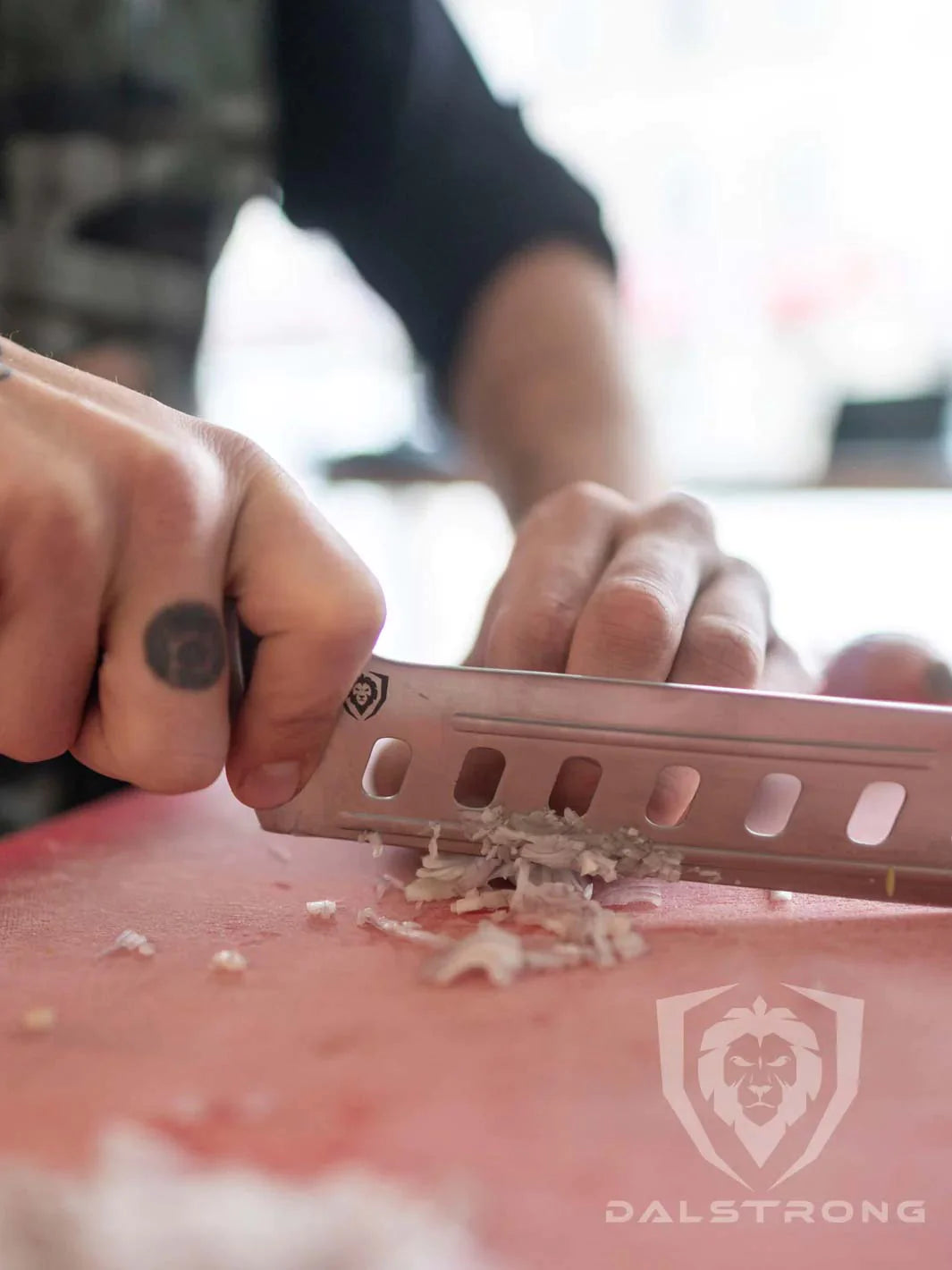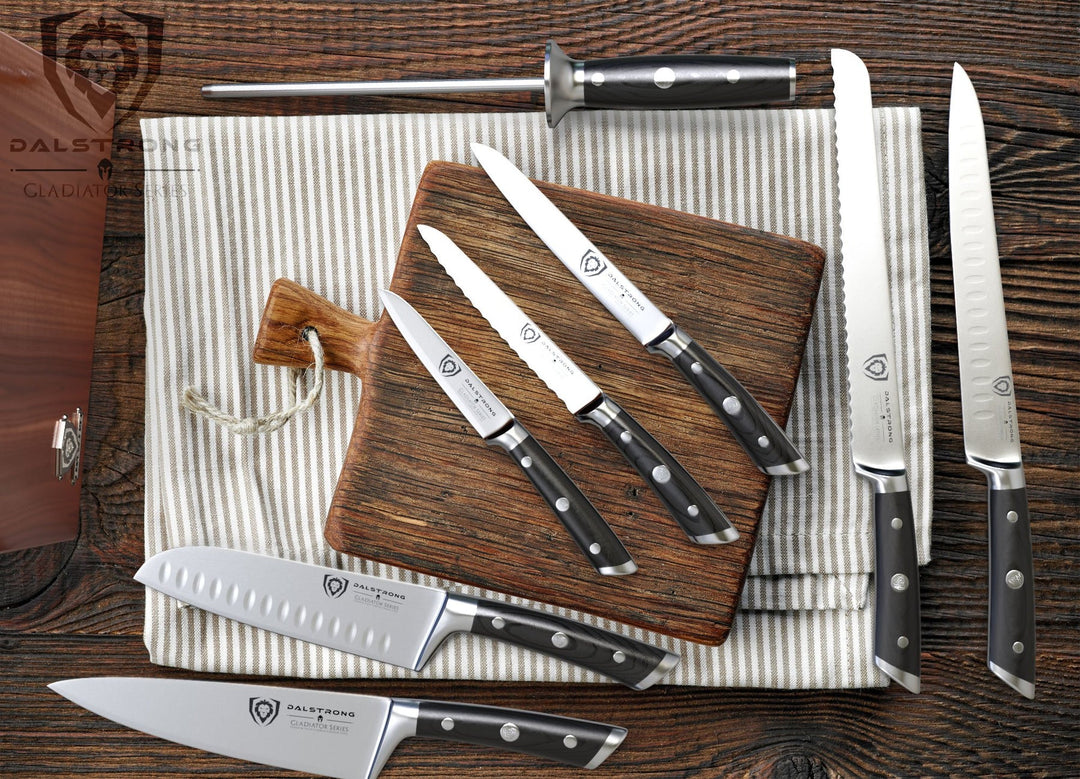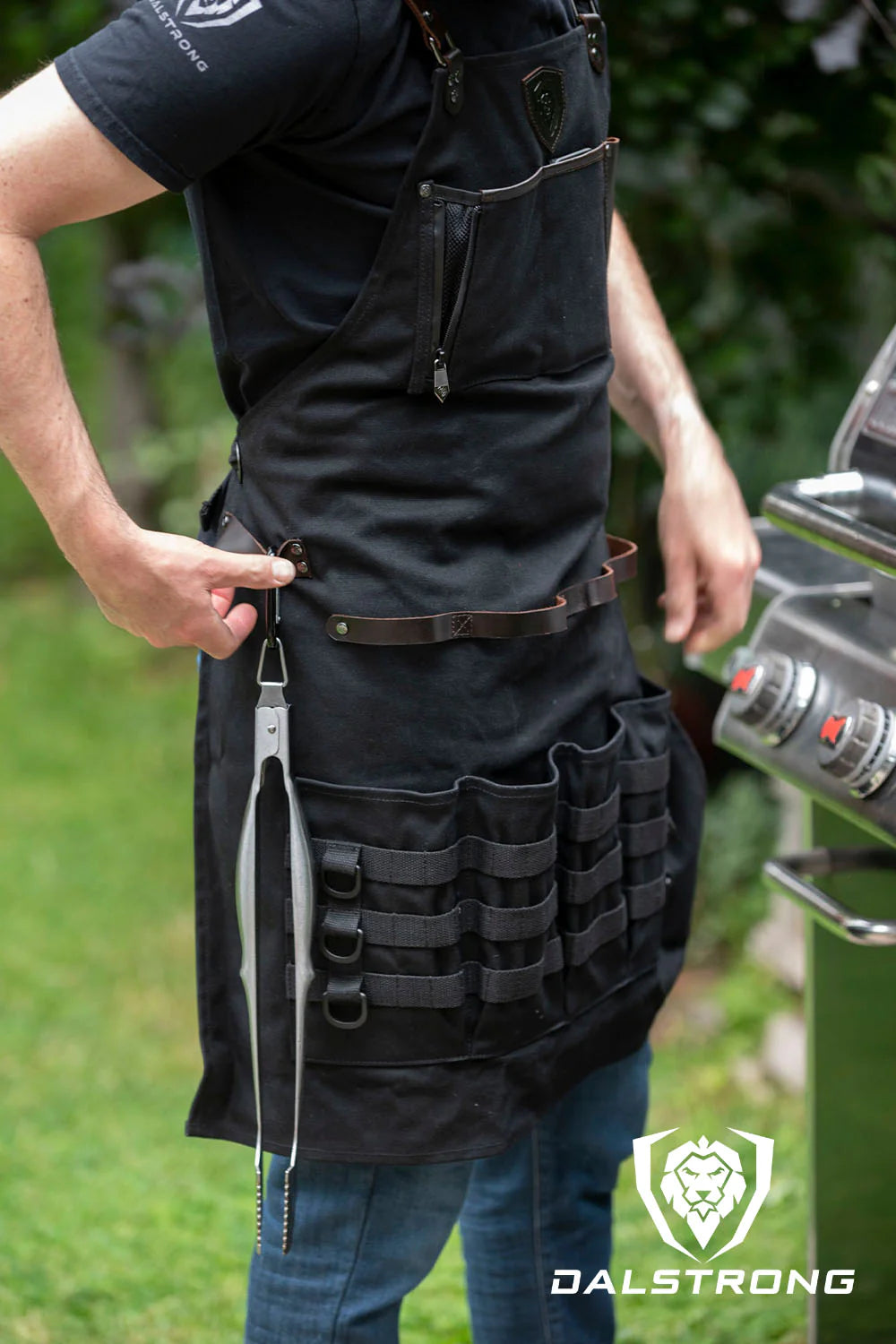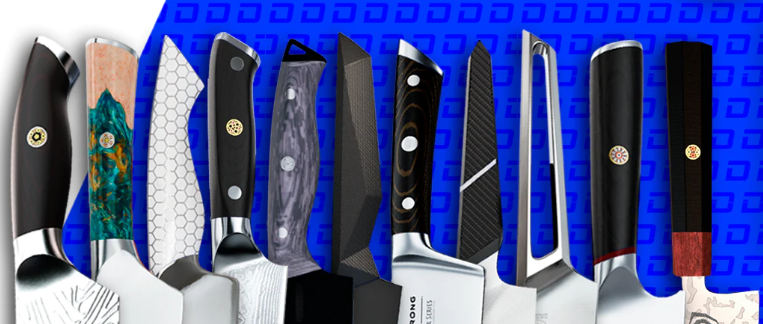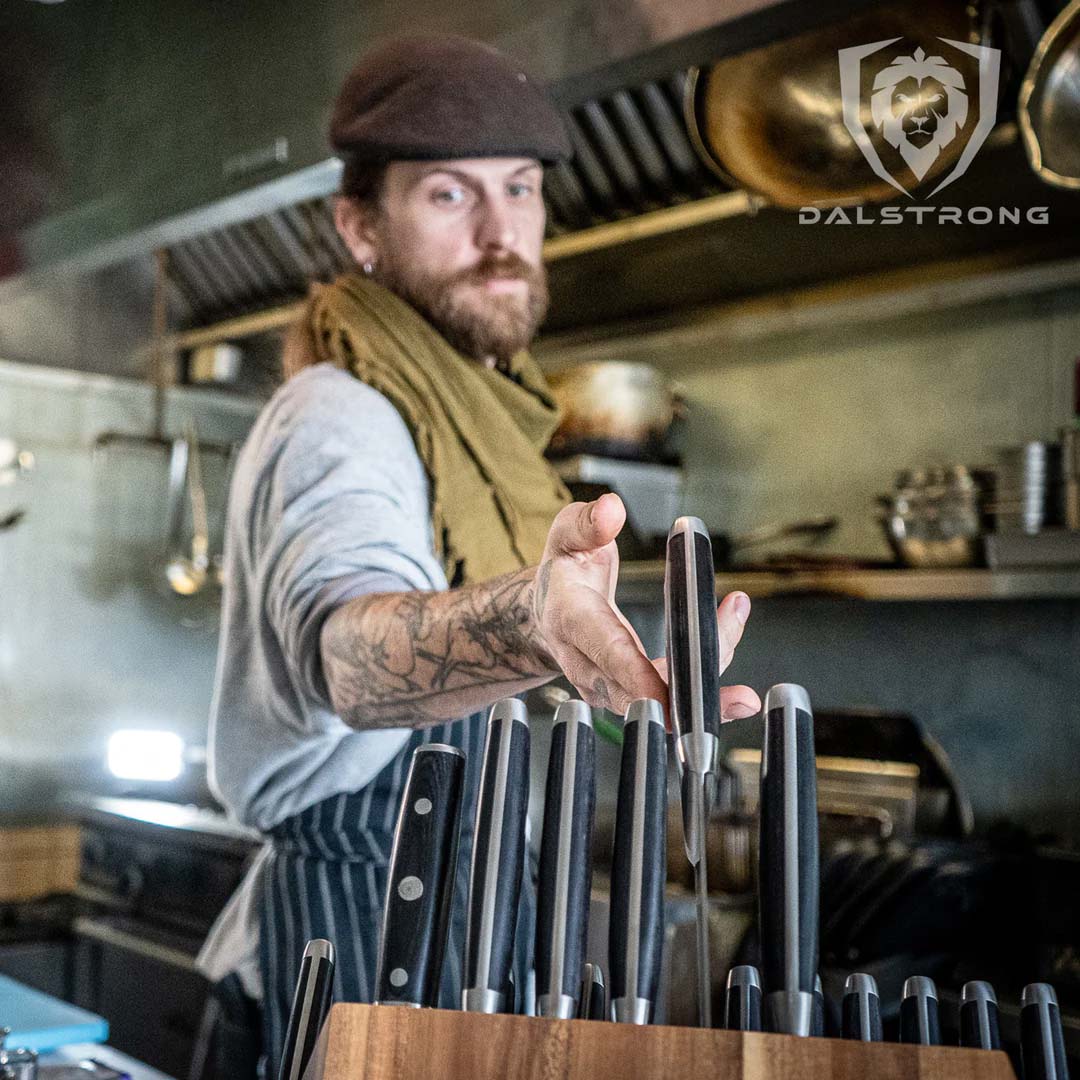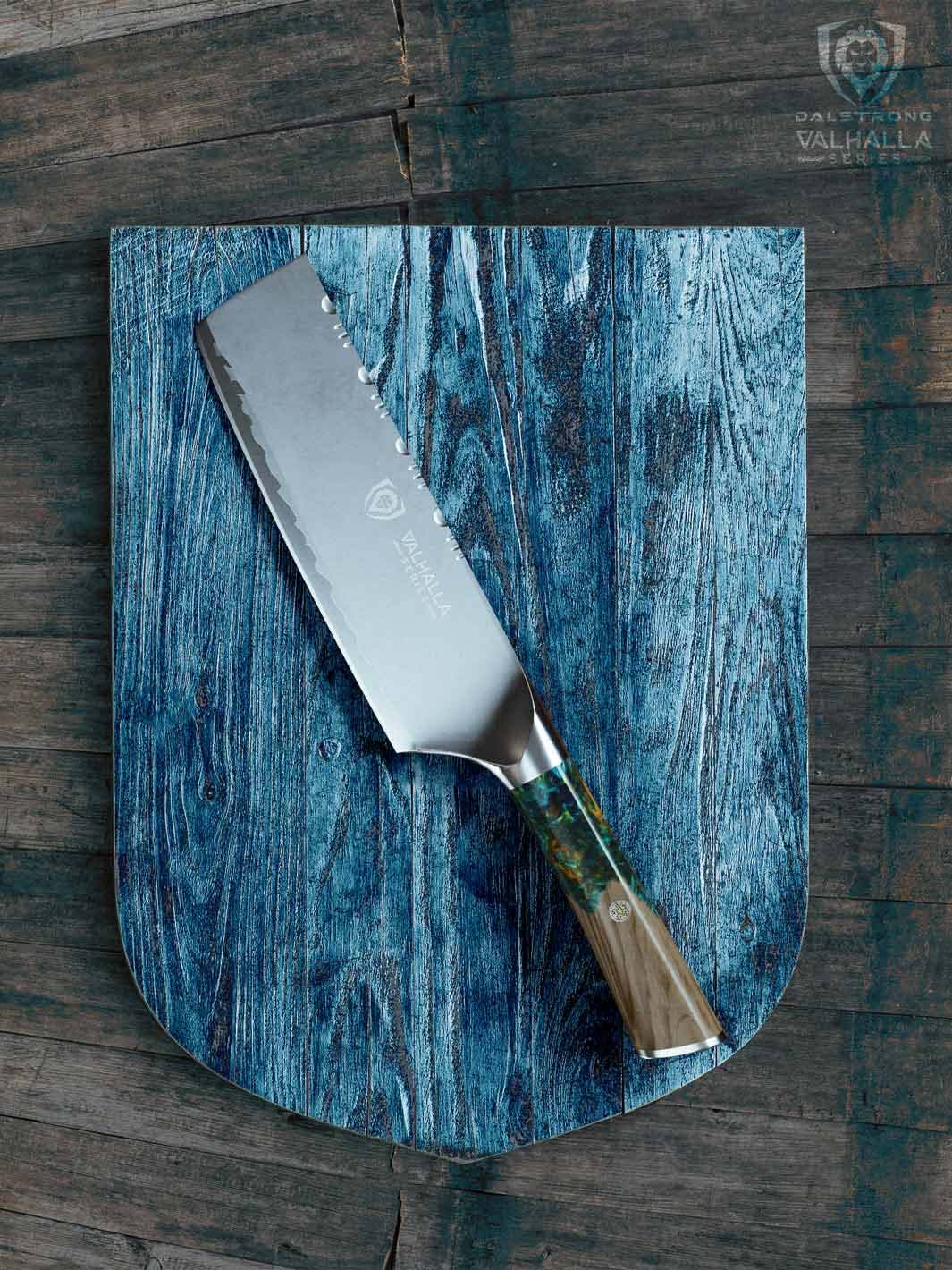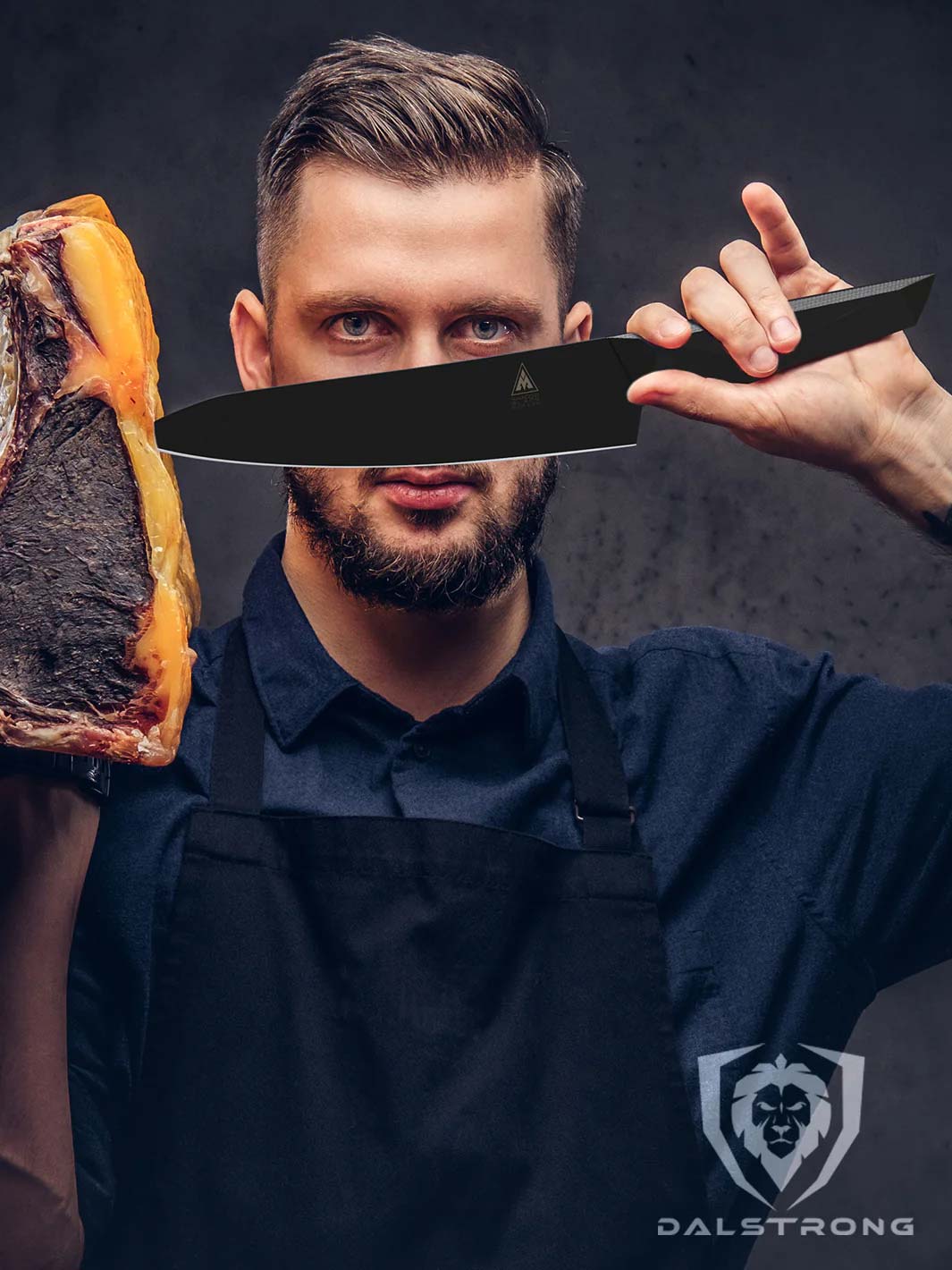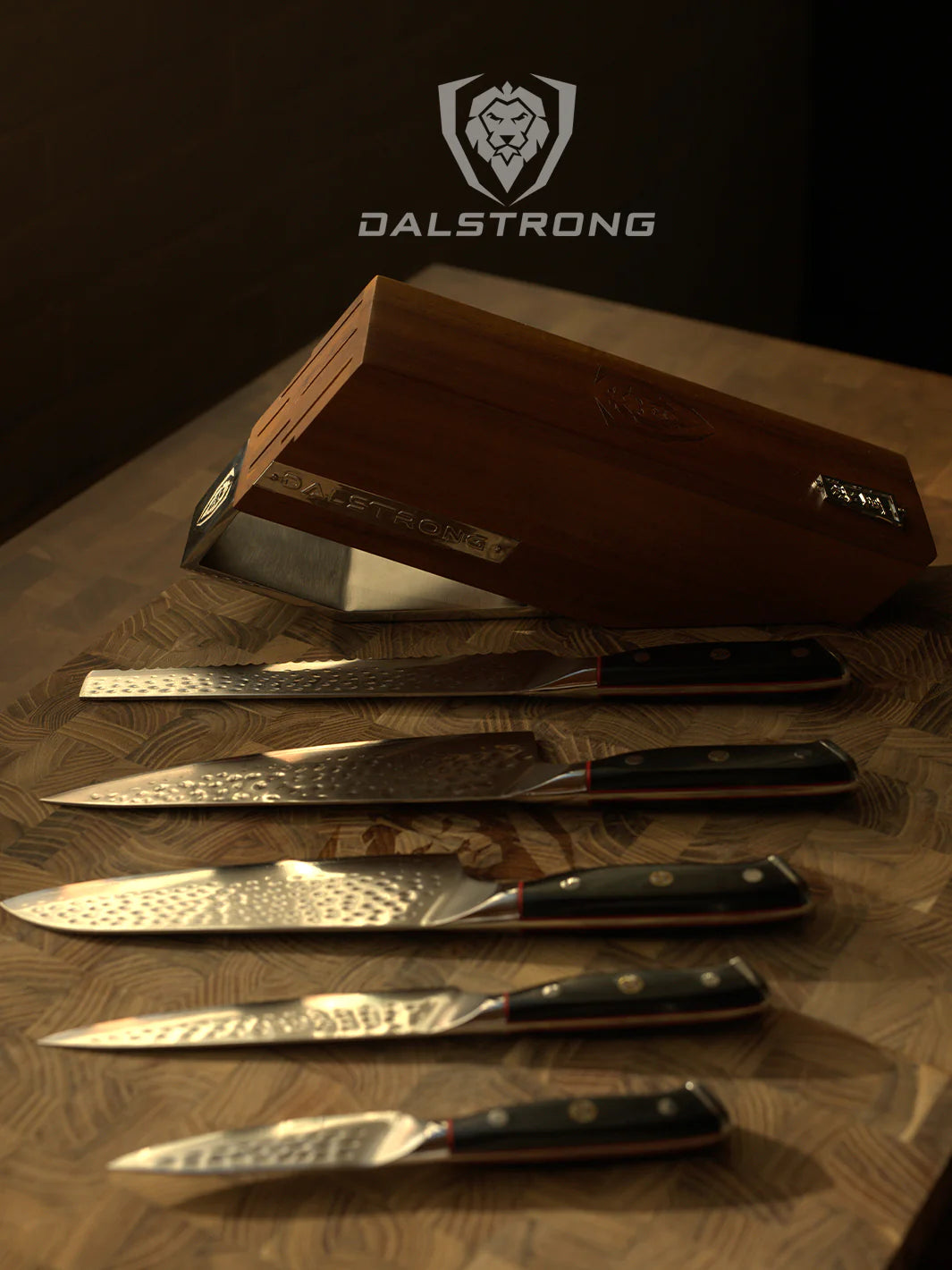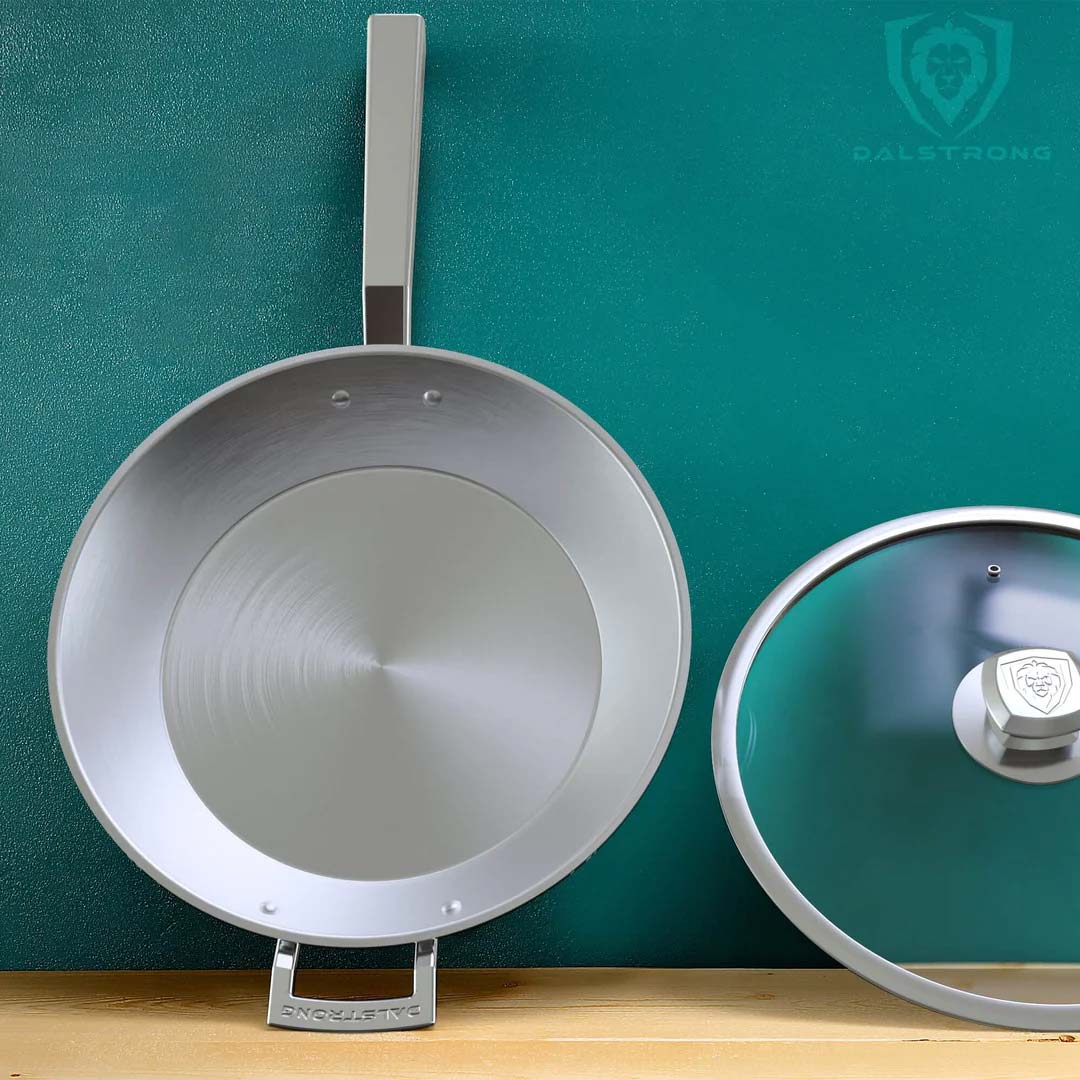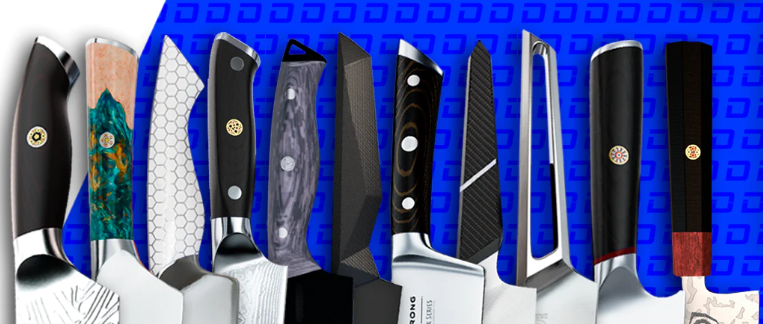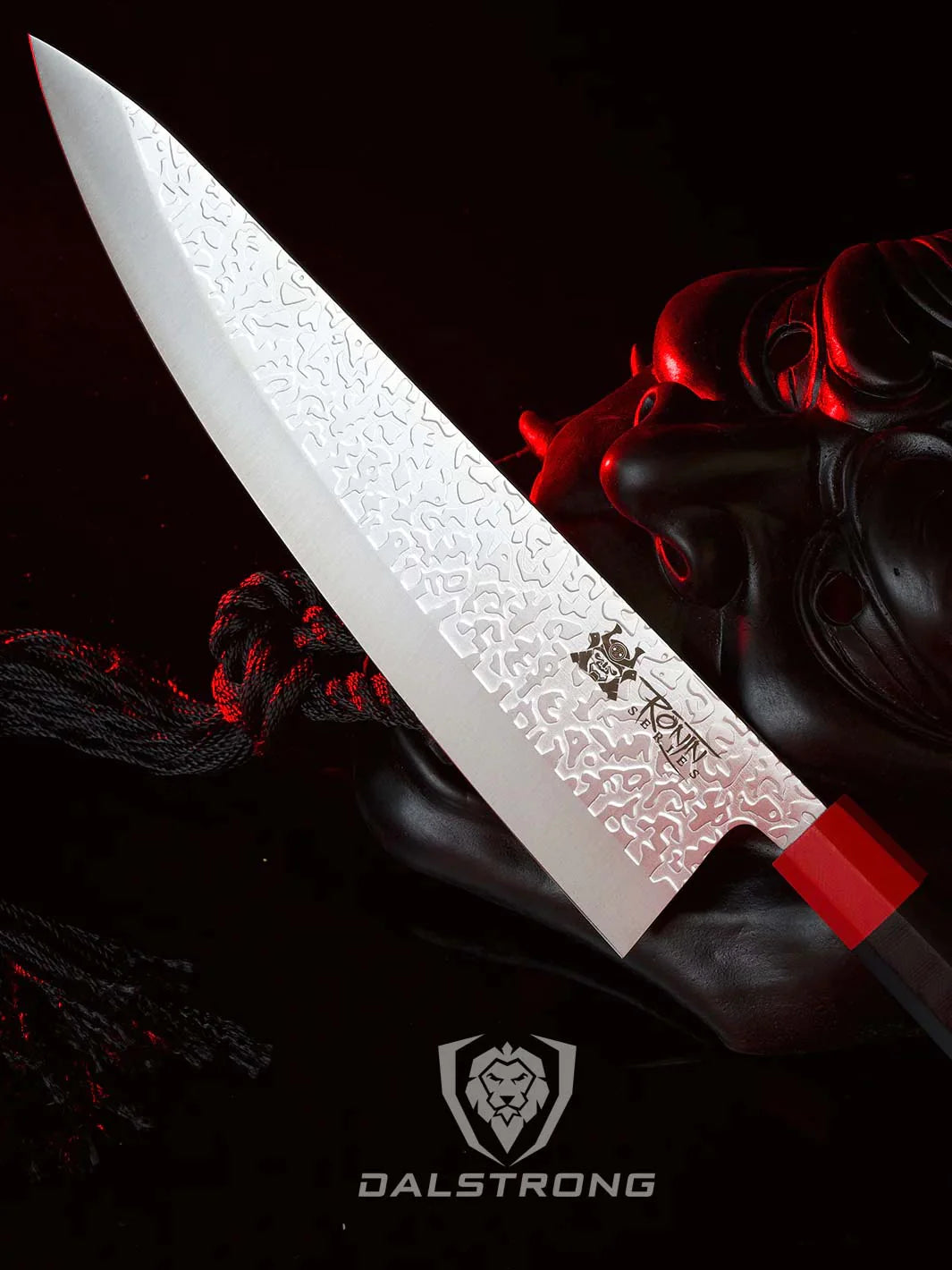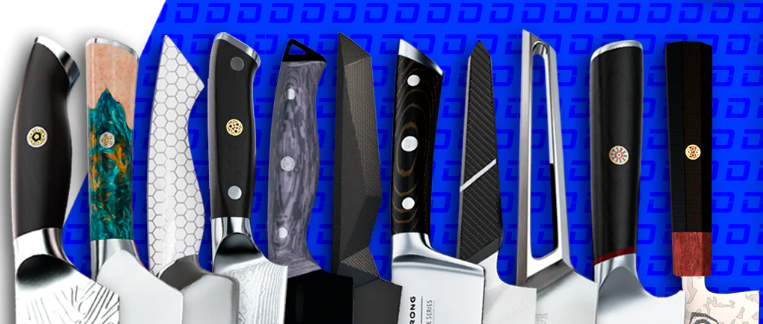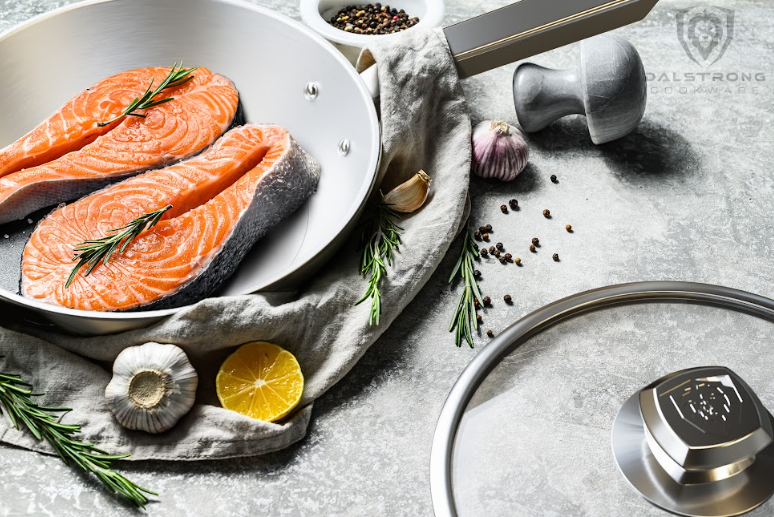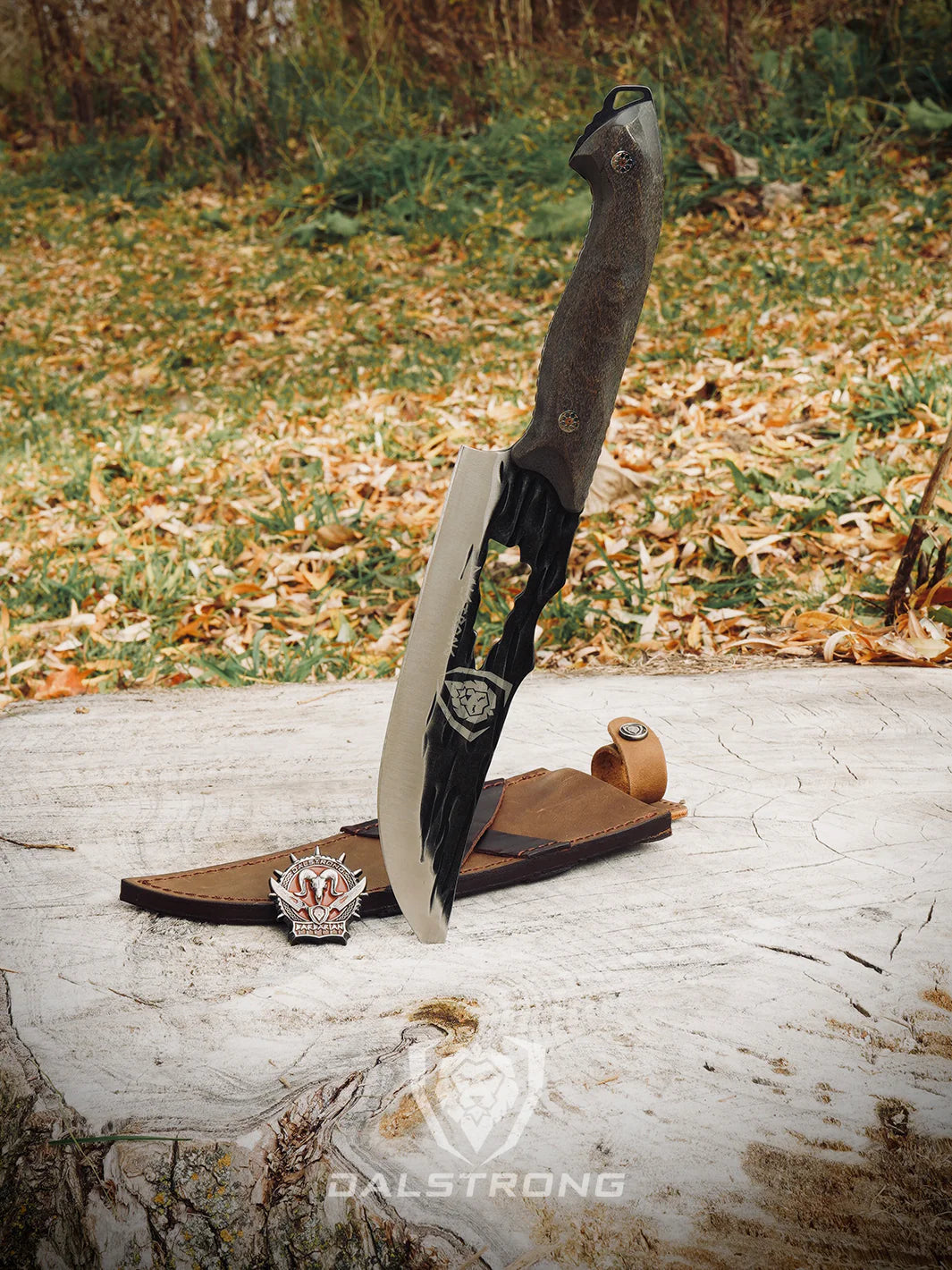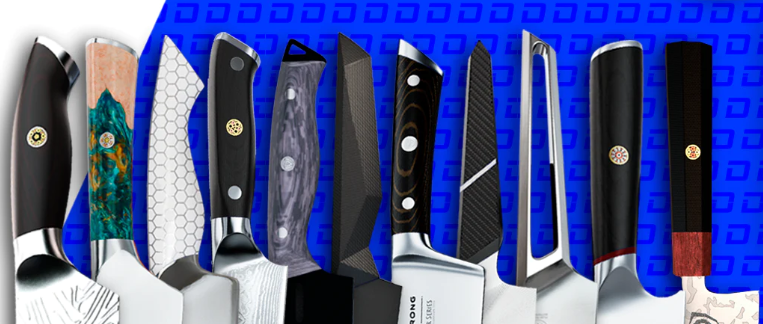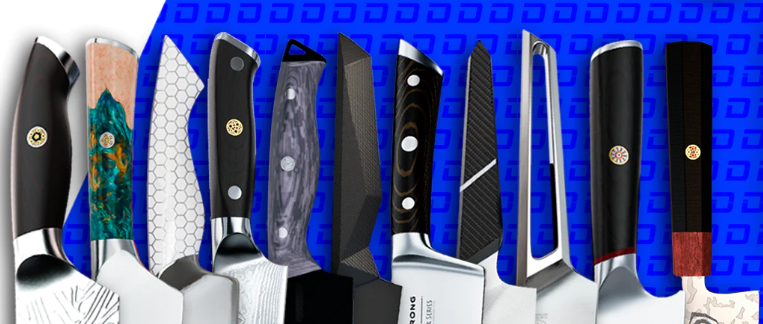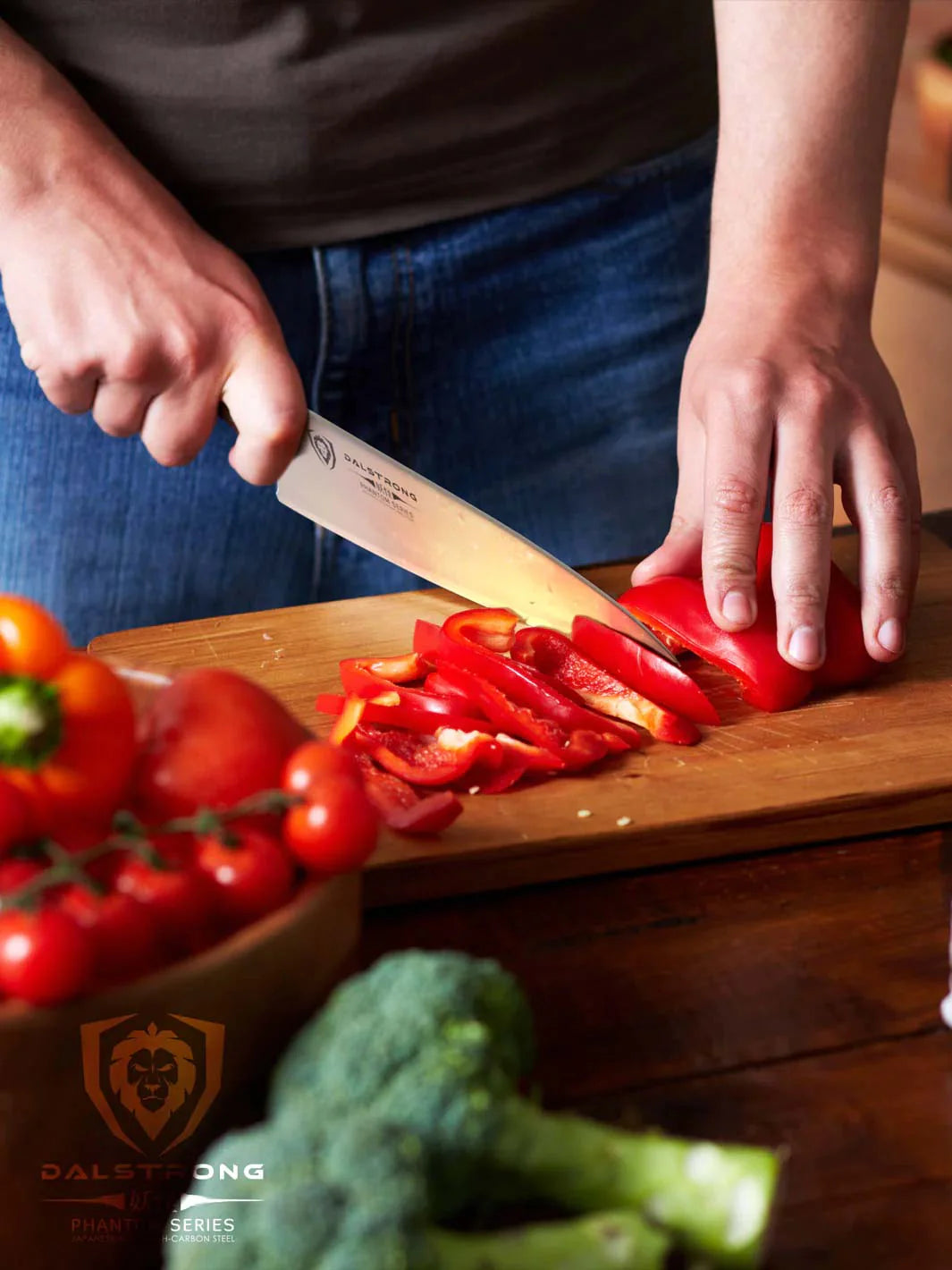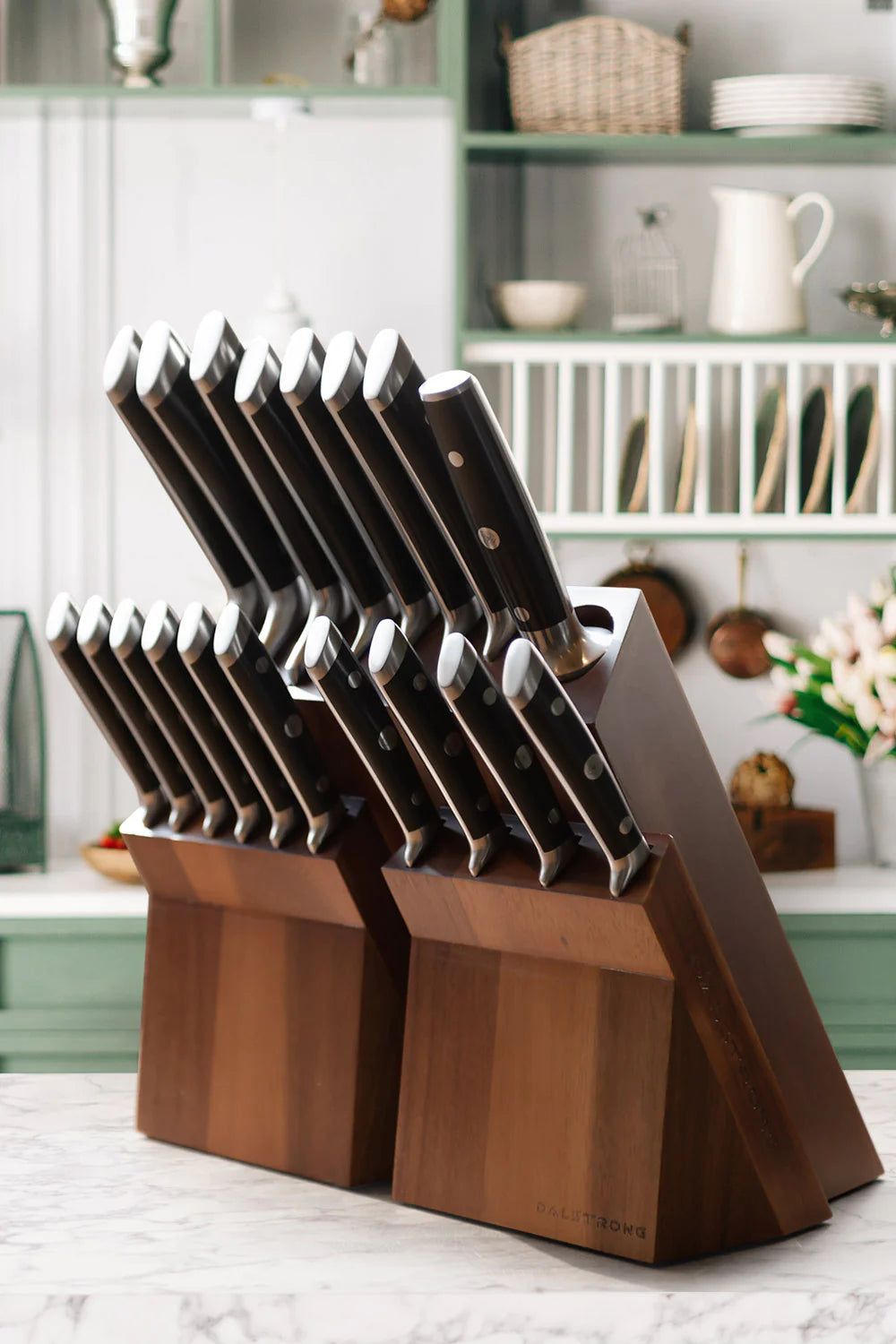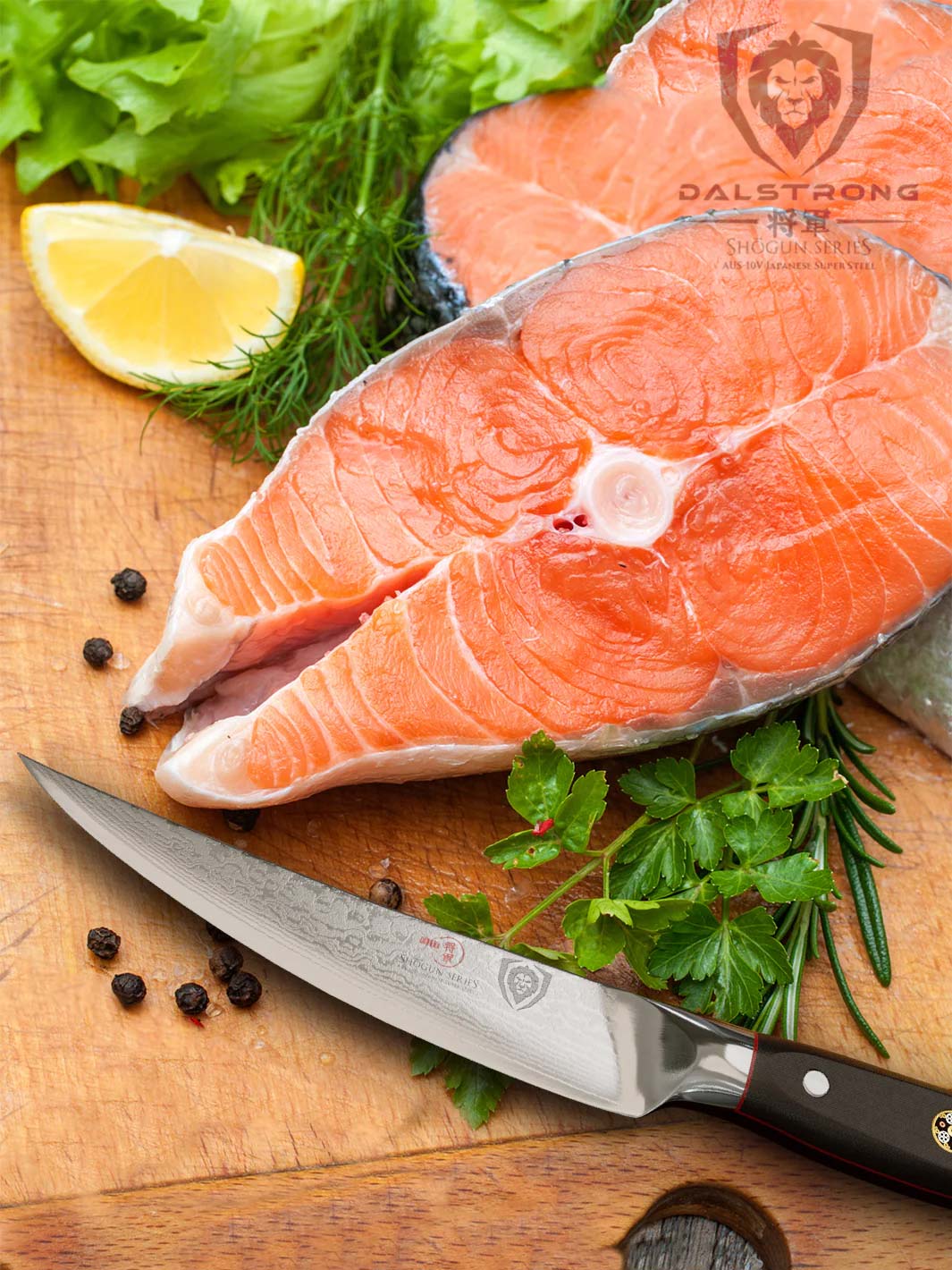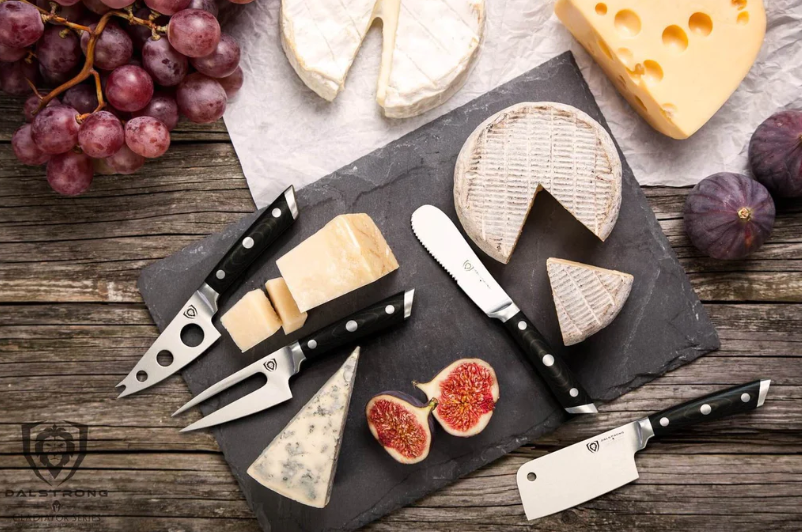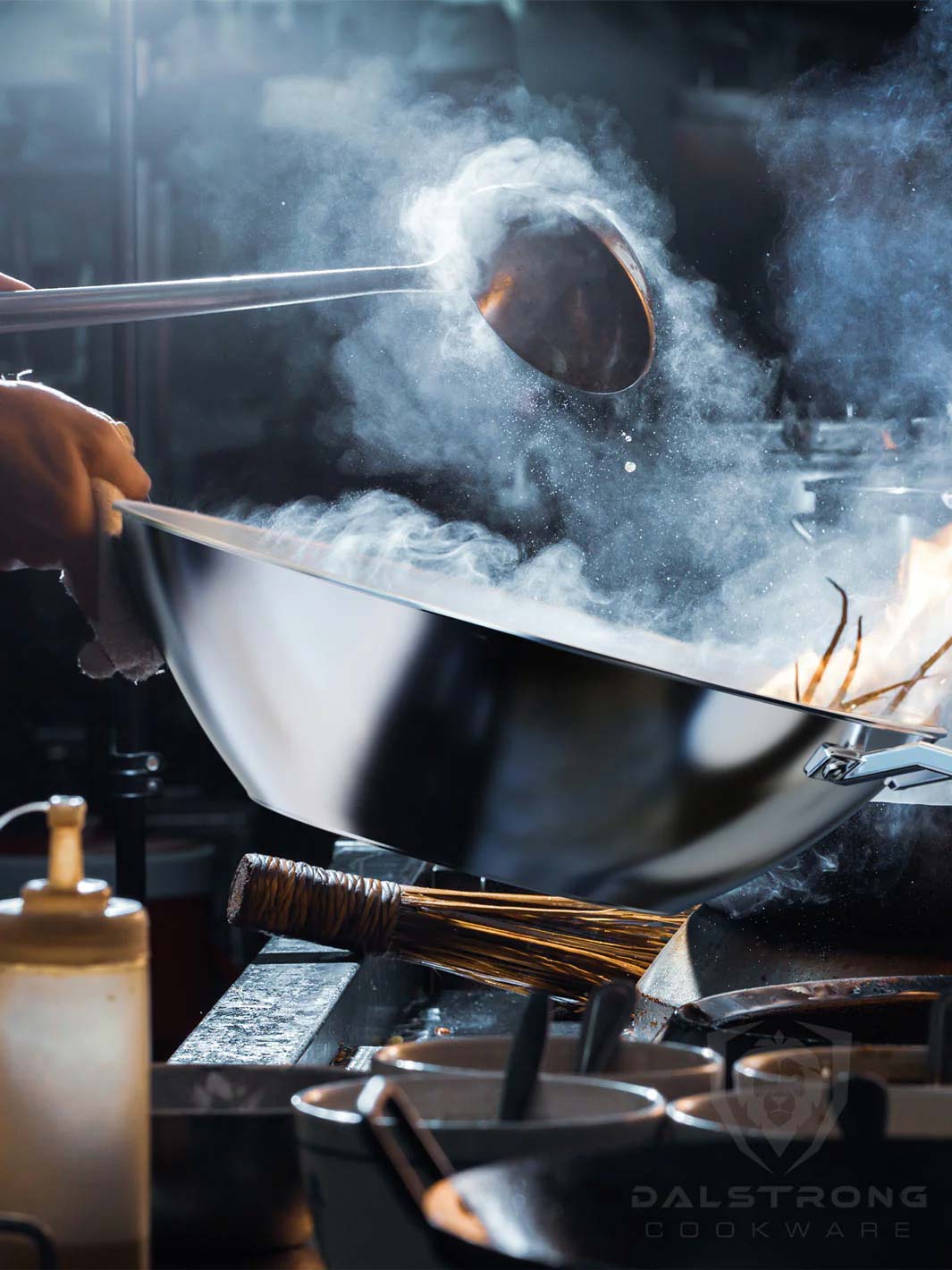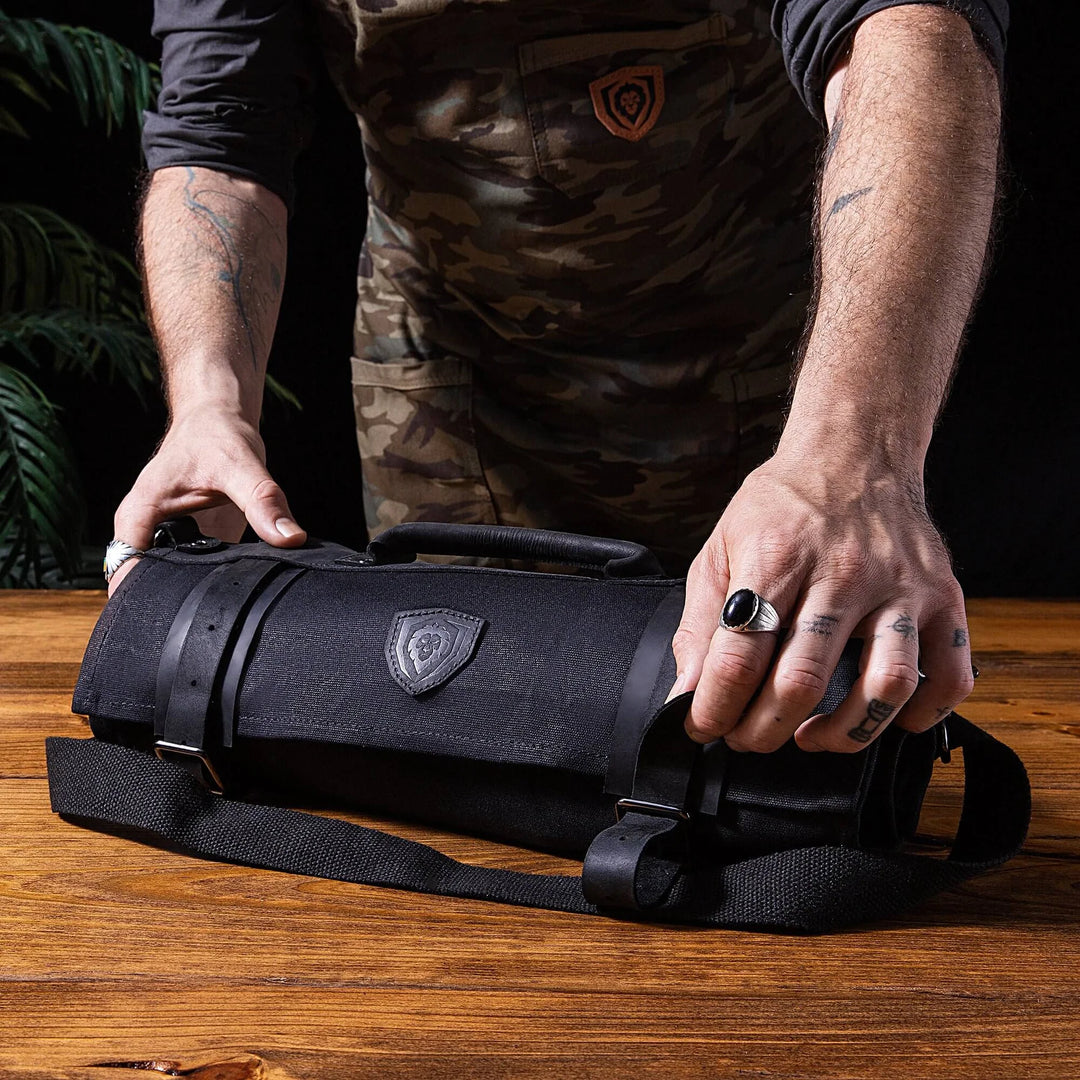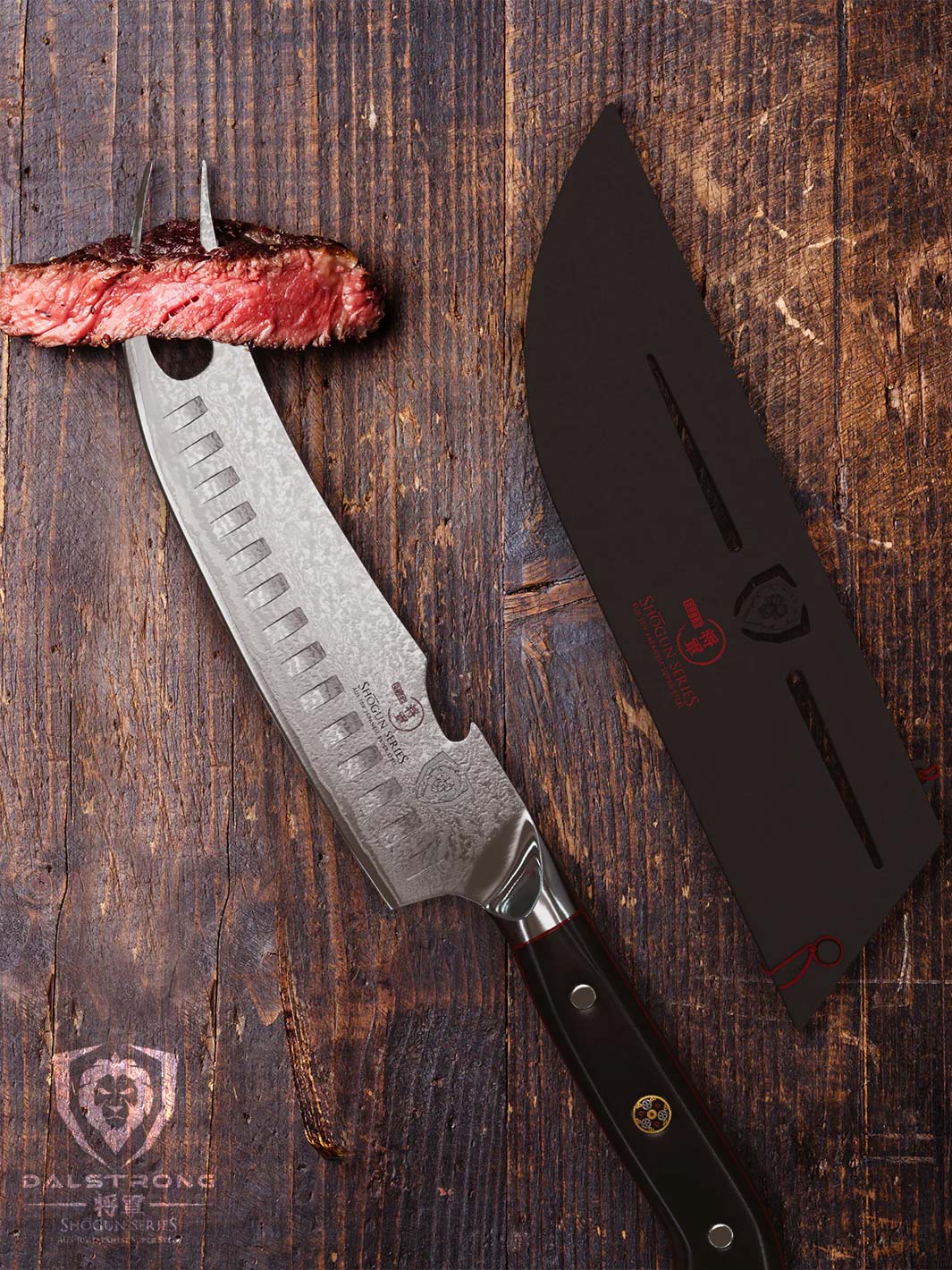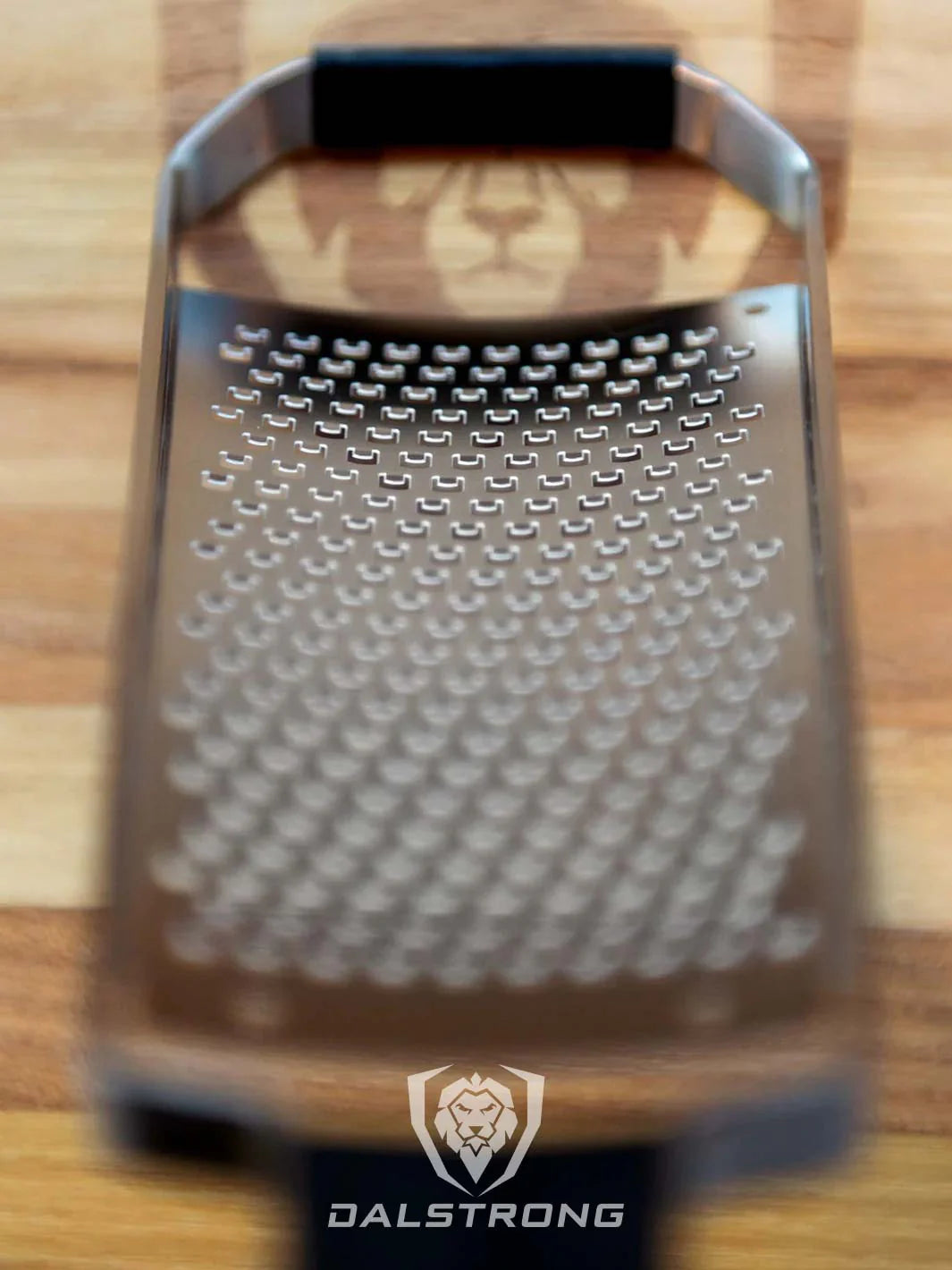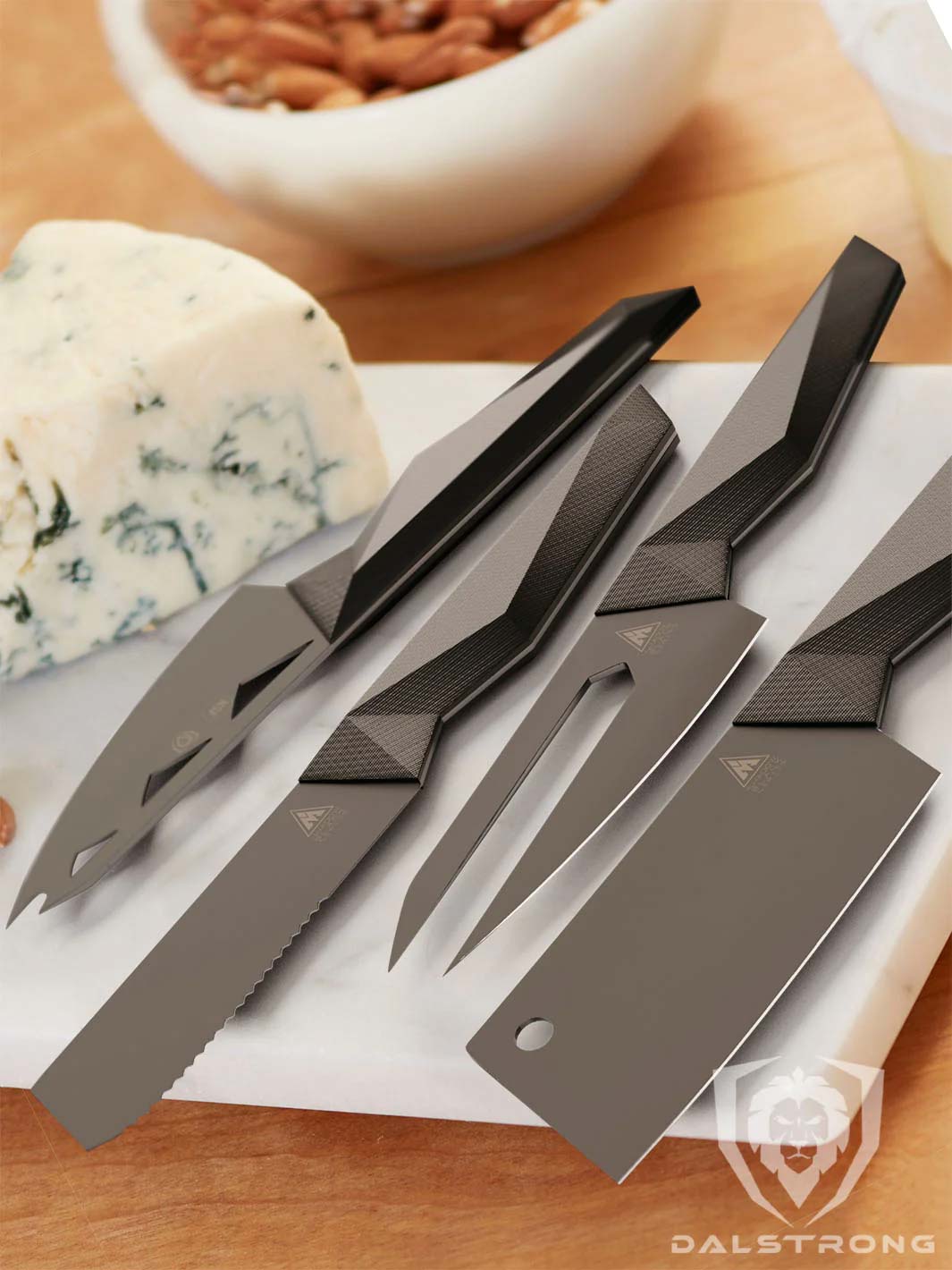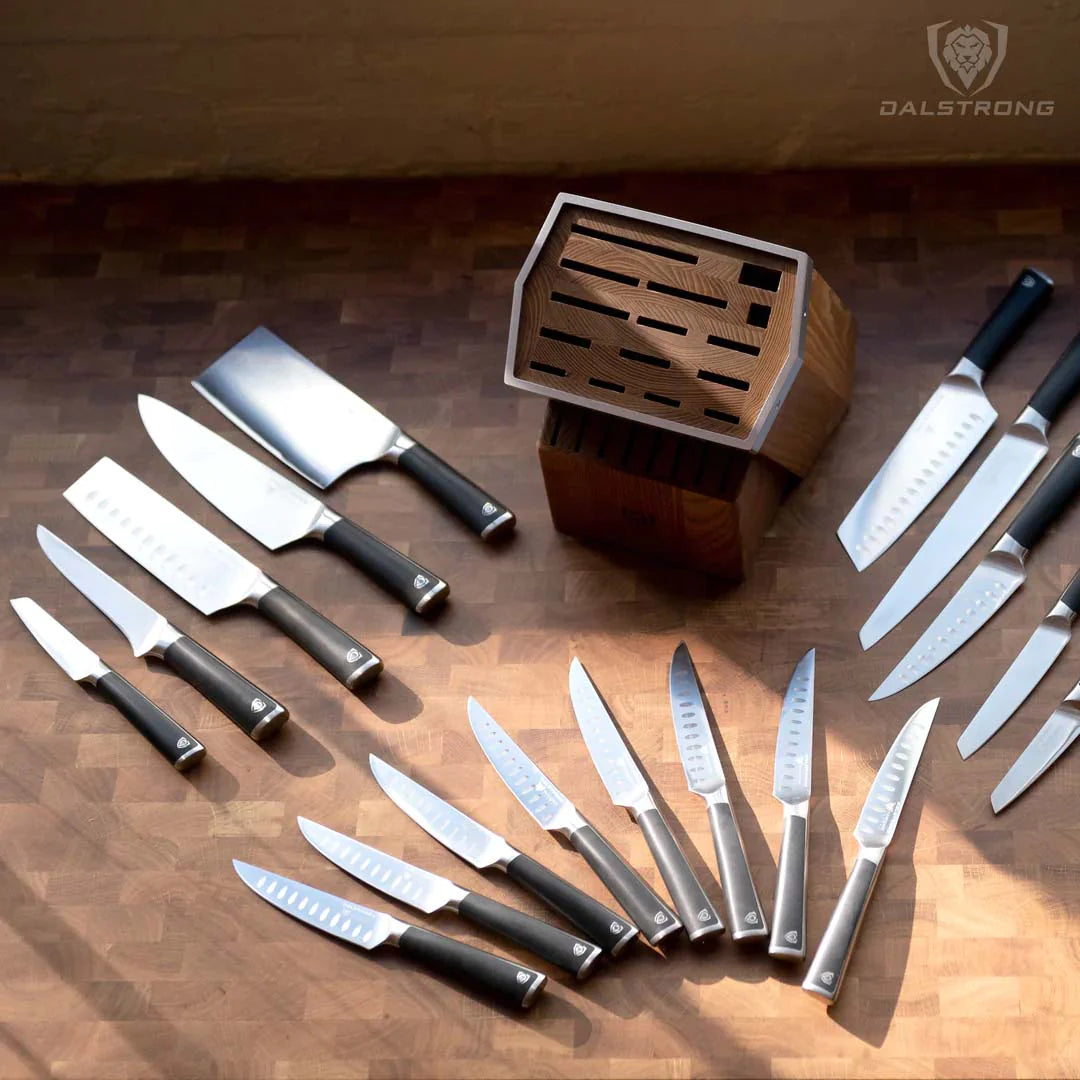Why A Whetstone Is Better Than An Electric Knife Sharpener
Today, we’ll be discussing the importance of knife sharpening, and particularly why whetstones are safer and better than electric knife sharpeners. Electric and manual sharpening tools are great and make excellent kitchen accessories, but I give the edge to whetstones on this topic. Trust me, I speak from experience – The experience in question was a couple of ER trips.
I never use electric knife sharpeners because they are far too large for the kitchen, yep, even the smallest ones. And besides, a whetstone can get the job done with no hustle or hassle required. It is a traditional, yet true and tried method of sharpening knives, that is a home cook and a chef's choice for the ultimate razor edge.
1. The Importance of Knife Sharpening
You may think that dulled knives won’t hurt you if it slips away from the surface of fruits, meats, or vegetables. However, this is entirely false. A dull blade requires quite a lot of pressure to cut and slice, and a dull blade will make it ‘bite’ the surface of whatever food it is that you’re cutting.
A dull blade will slide away from the food and you will end up injuring yourself. A sharp knife has an angled edge, which helps cut food faster. Since a sharp knife makes much more precise cuts than dulled knives, there will be very minimal waste.
Dulled knives or knives with damaged blades make food look dull, too. A sharp kitchen knife slices through herbs and meat in a clean manner, which at a cellular level, prevents your food from looking untidy, or oxidizing too quickly.
2. How To Tell If Your Knife Needs Sharpening
Sharpening your knife every two weeks is a great practice. But, it also depends on how often you use them. If you don’t cook often, you can store your knives in a knife set, or a knife block. This will keep the blades razor-sharp and prevent your knives from developing damaged blades.
If however, your knives lack a sharp edge, you could try the tomato or paper test.
Tomato Test
Steps:
- To test the kitchen knives, pick one with a dull blade.
- Angle your knife and glide through the halved tomato. (Ideally, you should try to glide the knife at any angle, as the edge should be sharp enough).
If your knife glides past the tomato, your sharpener has done its job.
Paper Test
Steps:
- Use a sheet of printing or construction paper.
- First, slice the top half of the paper, and then at a downward angle.
If the paper cuts into two parts, the sharpening process can be avoided for the time being.
3. What Is An Electric Knife Sharpener and How Does It Work?
Premium Whetstone Set #3000 / #8000 Grit
Electric knife sharpeners are larger and more expensive than whetstones. They run anywhere between $36 to $1100. Electric knives have an abrasive motor with multiple sharpening slots and are set at certain grinding angles.
Every slot has a different level of abrasiveness. An electric knife sharpener tends to work best on a professional electric knife since the blade is made with a combination of metals that can handle the abrasive motor.
The reason behind whetstones being more popular and preferred over professional electric knife sharpeners is that it doesn’t take much effort to understand the sharpener system. An electric knife sharpener also does not work on a ceramic knife or a ceramic rod.
Electric knife sharpeners are less versatile than a whetstone. Kitchen knives need to be sharpened at certain angles depending on their shape, and not all electric sharpeners can facilitate these angles.
How Electric Knife Sharpeners Work
- One at a time, place dulled knives in the first slot of the professional electric knife sharpener tool.
- For angle control, your knife should be at a 15º degree angle in the knife sharpener tool.
- Gently, pull upwards and to the tip from the base of your blade.
- You can alternate sides and sharpen the damaged blade at intervals of 10 minutes.
- Wash the blade on your knife and pat dry with a kitchen towel to prevent your knife from rusting. (This goes for a professional electric knife as well).
4. What Is A Whetstone and How Does It Work?
 Dalstrong Premium Whetstone Kit (#1000/#6000 Grit)
Dalstrong Premium Whetstone Kit (#1000/#6000 Grit)
Whetstones, also known as sharpening stones, are some of the best knife sharpeners out there. They are also the ultimate chef's choice when picking a sharpening tool. These incredible knife sharpener tools can quickly bring back the sharp edge of your kitchen knife, or just about any knife for that matter such as paring knives or serrated knives. Whetstones make a great knife sharpening tool for pocket knives or hunting knives, as well.
Using a whetstone elevates the angle control you have on your knife and gives the damaged blades a sharp edge. A whetstone polishes blades from the tang until its tip or only the blade’s edge – It depends on what you need from it.
Before diving into how this knife sharpener tool works, let’s talk about the 3 different kinds of whetstones available.
Oil Whetstone
Oil Whetstones need to be greased with a thin layer of oil before you put them to use. The oil acts as a lubricant to help regain the edge on your knife.
Traditional Whetstone
A traditional whetstone needs to be submerged in water before being used. This helps keep the blade fine and sturdy. This stone is perfect for sharpening kitchen knives.
Diamond Whetstones
Diamond whetstones are known for their incredible durability and how quickly they can regain lost edges. Unlike oil whetstones, they can be used as-is. However, they’re slightly more expensive than the other two.
How Whetstones Work
Steps:
- To gain the best knife edge, angle your dulled knives on a whetstone at 20º degrees. The flat side should be at an upward angle against the whetstone.
- Start sweeping your knife from the blade.
- Once the blade is sharp enough, move further towards the tip.
- To get a sharp edge on the tip of your knife, sweep it gently against the whetstone. (If the knife on whetstone resembles the noise of grinding sandpaper, you’re doing it right).
- Flip your knife in intervals to achieve perfect angle control.
- A whetstone polishes blades quickly, so after 10 minutes of sharpening, your knife should be good to go.
5. How To Choose A Whetstone
 Dalstrong #400/#1000 Grit Premium Whetstone Set
Dalstrong #400/#1000 Grit Premium Whetstone Set
Grit
When choosing a whetstone, you need to be well-versed with the term ‘grit’. Grit is the number indicated beside the whetstone, which refers to the density and size of the abrasive particles in it.
For example, if the serrations on your knife’s blade are damaged, a grit with a lower number is ideal to redeem the knife’s sharp edge and serrated blade.
Within the ‘sharpener system’, there are 4 key brackets of grit, and every single of them serves a different purpose when it comes to sharpening your knife. Whetstones have the most incredible range of grit available. They range from 100-to 6000.
In a nutshell, whetstones can not only repair dulled knives, but also fix chipped edges, sharpen blades, and revive sharp culinary again. There is an added benefit for serrated knives, too. Since these knives are harder to sharpen, a whetstone with the right grit can bring back its straight edge and serrated blade again.
Size
Whetstones are portable and easy to hold in terms of their size. They can be stored in your kitchen arsenal to test kitchen knives from time to time.
Time
Electric knife sharpeners take more than 10-12 minutes to sharpen, whereas whetstones can get the job done anywhere between 5-10 minutes. Another thing to note about electric knife sharpeners is that even though they take a longer time to sharpen knives, the abrasive motor will still cause damage to the blade.
However, whetstones will make your knife durable with only 5-10 minutes of sharpening time.
Price
Reputable whetstones run anywhere between $50-$170.
6. More About Whetstone Grit and How To Care For Them
#1000 Grit or Less
A whetstone with 1000 grit is used to treat damaged blades or dull blades. If you have significantly damaged blades, a whetstone with this grit can make sharpening knives an uncomplicated process, while simultaneously improving the edge grip. It is perfect for home cooks.
#1000 - #3000 Grit (Medium Stones)
A whetstone with #1000 - #3000 grit is excellent for quick sharpening of knives, and to help regain their edge. These whetstones are less dense and coarse, which makes them perfect to sharpen Japanese knives that thrive with state-of-the-art cutting edges on their blades. These whetstones are meant for scissor sharpening or just a quick sharpening process by making your blades razor-sharp.
#4000 - #8000 (Finishing Stones)
A whetstone with #4000 - #8000 grit helps you teeter on the cusp between sharpening knives and achieving a superfine edge grip. If however, you’re only looking to sharpen your blade’s edge, then a whetstone with a #4000 or #5000 grit would work best for you.
A whetstone with an #6000 grit would help in sharpening knives that are used for cutting up meat. Whereas, an #8000 grit would be best if you only use Japanese knives, or knives to cut large fruits and vegetables.
How To Care For Whetstones
Whetstones are much easier to care for than professional electric knife sharpeners. This is for a couple of reasons. First, if one of the sharpening slots malfunctions, you would need a complete replacement, which is going to make quite a dent in your pocket.
Electric knife sharpeners also poss a higher chance for injuries as these machines can cut you deep if the knife slips away from the surface of the sharpener.
Thanks to the smooth surface of a whetstone, you won’t hurt yourself in the process of sharpening your knives. To care for your whetstones, all you need to keep in mind is they should never be submerged in water. If needed, only add a few droplets of water to the whetstone.
Once you’re done using your whetstone, let the surface of the stone dry thoroughly. Don’t place the whetstone back in its box when the surface is damp as that will decrease its durability and result in molding.
7. A Quick Discussion on Honing Rods
 Honing Rod 10"Ceramic Coating | Dalstrong
Honing Rod 10"Ceramic Coating | Dalstrong
Honing rods, also known as sharpening rods, help the precision adjust back onto the knife’s blade. They don’t sharpen knives but straighten them.
Doing this improves the angle control you have on your knife in between sharpening sessions. This is an excellent tool to help you regain a straight edge and serrated blade on knives that have extremely minuscule serrations along with them.
How To Choose A Honing Rod
Size
Sharpening rods or honing rods are usually 9” to 12” inches long and work well for most knives, especially to regain a straight edge and serrated blade on bread knives.
Time
Honing rods take a couple of minutes to hone a dull blade or a dull knife, which makes them an excellent alternative to whetstones when you need a quick fix However, whetstones are needed for sustained sharpening.
If you’re working with serrated blades, a honing rod helps sharpen the serrations without damaging the blade.
Price
Most honing rods are expensive as they are made with premium quality stainless steel for added durability – Ranging anywhere between $90 - $170.
However, at Dalstrong, premium is the standard, so our honing rods are well-priced, ranging between $50 - $70.
How To Use A Honing Rod
- Angle your knife on the honing rod, you can achieve the best angle control on your knife when it is pointed at 15º-20º degrees.
- Apply pressure on the knife and oscillate back and forth.
- Continue this process with intervals every 5 minutes and you’re good to go!
8. Dalstrong’s Best Whetstones
1. #1000 / #6000 Grit Combo with Oak Storage Box Portable Whetstone Kit
There is nothing better than a sharp edge on a premium-grade knife. So, it only makes sense to pair your knife with honing rods/sharpening rods to keep the blade razor-sharp. This whetstone kit is perfect for you to champion your inner Dalstrong Pro.
Pros:
- Made with the highest quality of corundum.
- Equipped with a functional and portable storage box.
- Dalstrong’s ‘After Service Care’ to help you if any inconvenience arises.
Cons:
- If you’re looking for a whetstone grit that ranges between #3000 and #8000, I suggest this.
- If you’re looking for an oiled whetstone, this may not be the one for you. But, I still suggest that you try it. This kit isn’t built to fail at all.
2. #1000 / #6000 Grit with Nagura Stone & Rust Eraser Premium Whetstone Kit
This is a personal favorite. This whetstone kit is made with premium quality corundum and is equipped with two individual whetstones with a #1000 and #6000 grit for sharpening damaged blades or to make blades razor-sharp. It is perfect for knives and scissors, and to revive your sharp culinary!
Pros:
- The base is made with Acacia wood for an uncomplicated sharpening process.
- The Nagura stone acts as a conditioner to finish off the sharpening process and smoothen the damaged blade.
- Offers excellent angle control on your knife when you cut or slice.
Cons:
- If you’re looking for a whetstone kit that has a grit less than #1000, I suggest this.
- Could be out of budget for some folks.
3. #3000 / #8000 Grit Premium Whetstone Set
This premium whetstone kit is packed with convenience and function. This whetstone is designed with premium quality corundum and has two large whetstones which help in sharpening your knives with ease.
Pros:
- This whetstone kit helps the knife’s precision adjust to its best angle.
- It is designed to fix damaged blades and bring back their sharp edge.
Cons:
- If you’re looking to fix chipped edges, I suggest a whetstone kit with a 400/1000 grit.
- You may be looking for a rust eraser, which can be found in this whetstone kit.
4. #400 / #1000 Grit Premium Whetstone Set
This premium whetstone set is designed with top-grade corundum for sturdiness and resilience. It has a show-stopping grit of 400 and 1000 to bring back a sharp edge on your knife’s blade.
Pros:
- Put together with Acacia wood for durability.
- Equipped with a 400 grit sharpening stone.
- Easy and low in maintenance, which saves you time.
Cons:
- I suggest a whetstone with 6000 grit if you’re looking to refine the edge of serrated knives or paring knives.
- If you’re looking for a rust eraser, it can be found in this whetstone kit.
Bonus Honing Rod:
5. Honing Steel 9” Shadow Black Series | NSF Certified
This 9” inch honing steel, also known as a honing rod, is precision forged, wear-resistant, and made with high-carbon stainless steel which is perfect to bring back its sharp edge.
Pros:
- Equipped with added chromium plating for resistance to stain and corrosion.
- The tiny grooves along the honing rod’s surface help realign the blade on knives, especially serrated knives.
Cons:
- Honing rods do not sharpen knives, they only provide a better angle to an already sharpened knife.
- You could be looking for a honing rod that better fits your budget. So, I suggest this 10” inch honing steel from the Gladiator series.
- You may prefer a handle made entirely with stainless steel.
And hey, if you’re new to the world of knife sharpeners, check out Dalstrong’s video on how to sharpen your knife with a whetstone.
9. Frequently Asked Questions
Are electric knife sharpeners worth it?
Electric knife sharpeners are more costly and louder than whetstones. The sharpener slots can get damaged easily, which would be quite expensive to fix.
Is an electric knife sharpener better than a manual one?
Don’t underestimate the power of manual knife sharpeners! A whetstone is quicker than a professional electric knife sharpener and budget-friendly, too.
What is the best way to sharpen a knife?
Whetstones are the best sharpening tools for dull knives or dull blades. They require less time and effort, are budget-friendly, portable, and highly durable.







































































































































































































